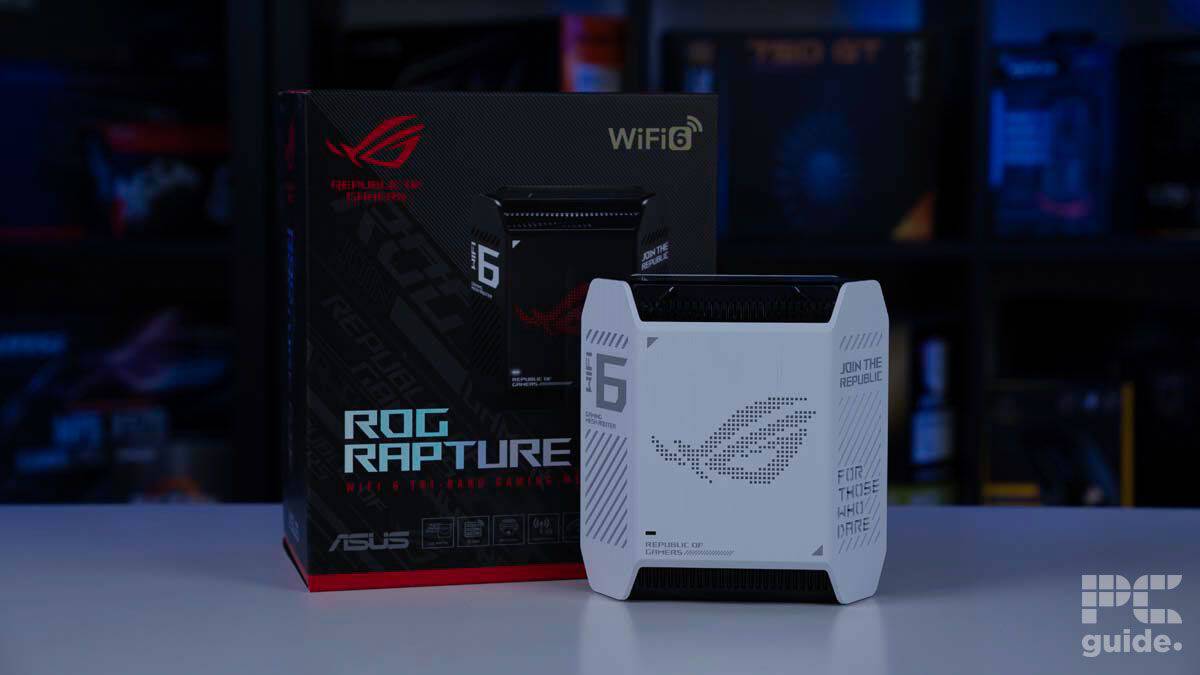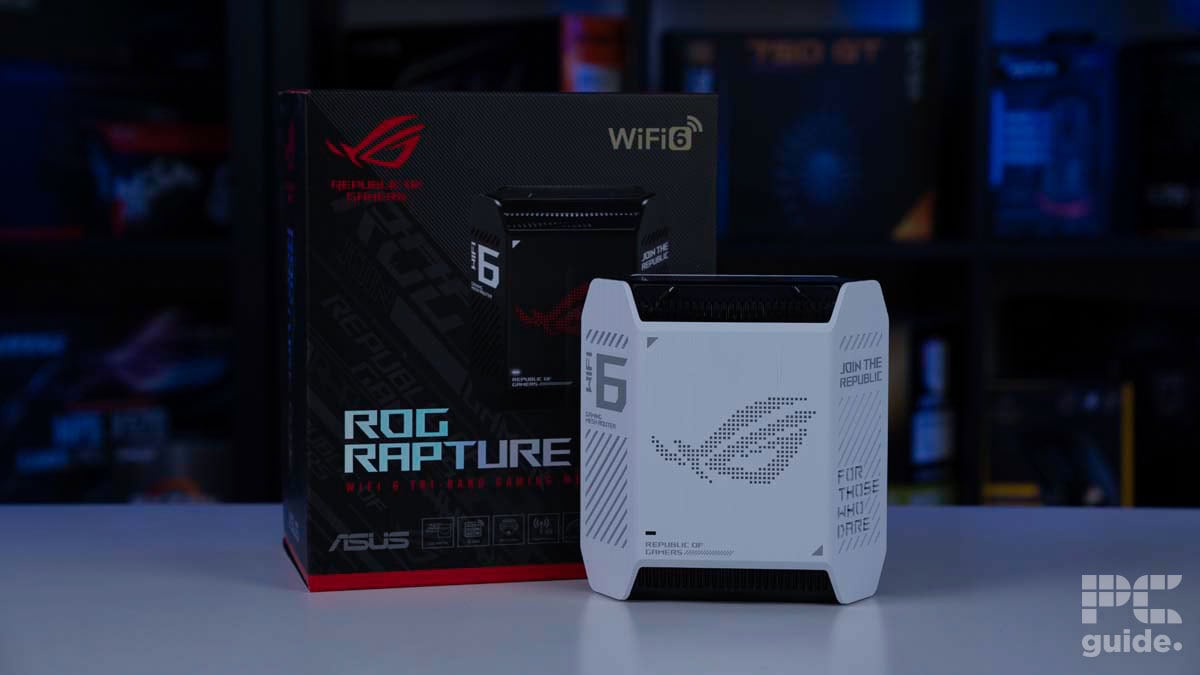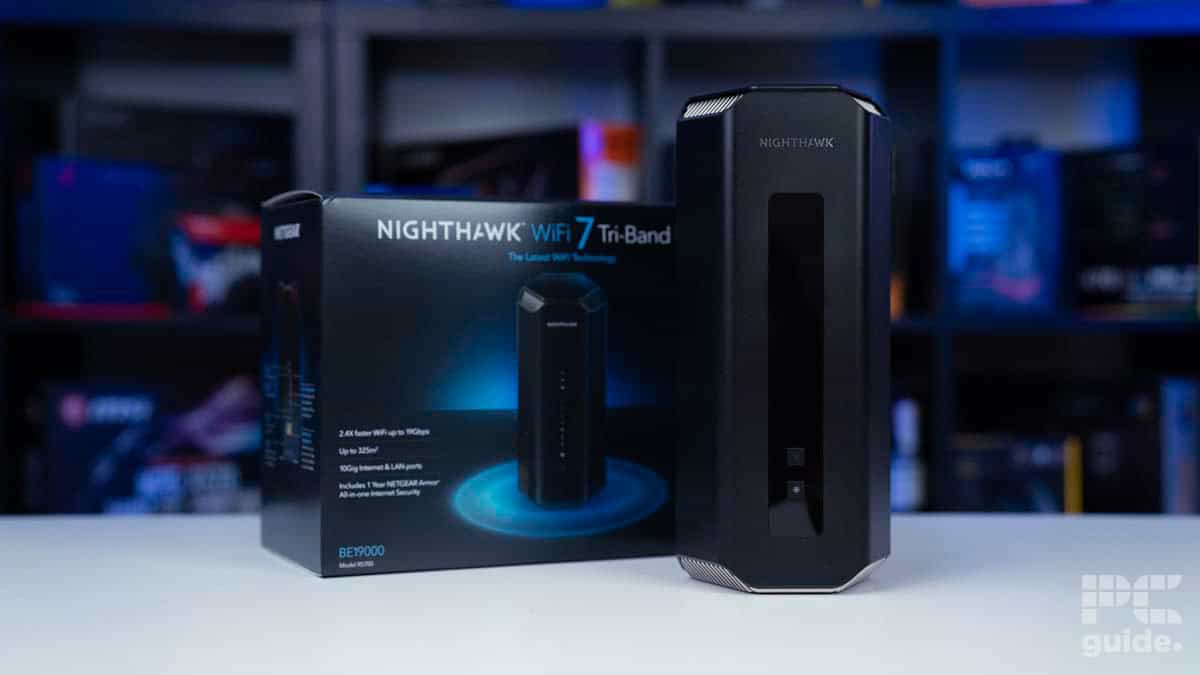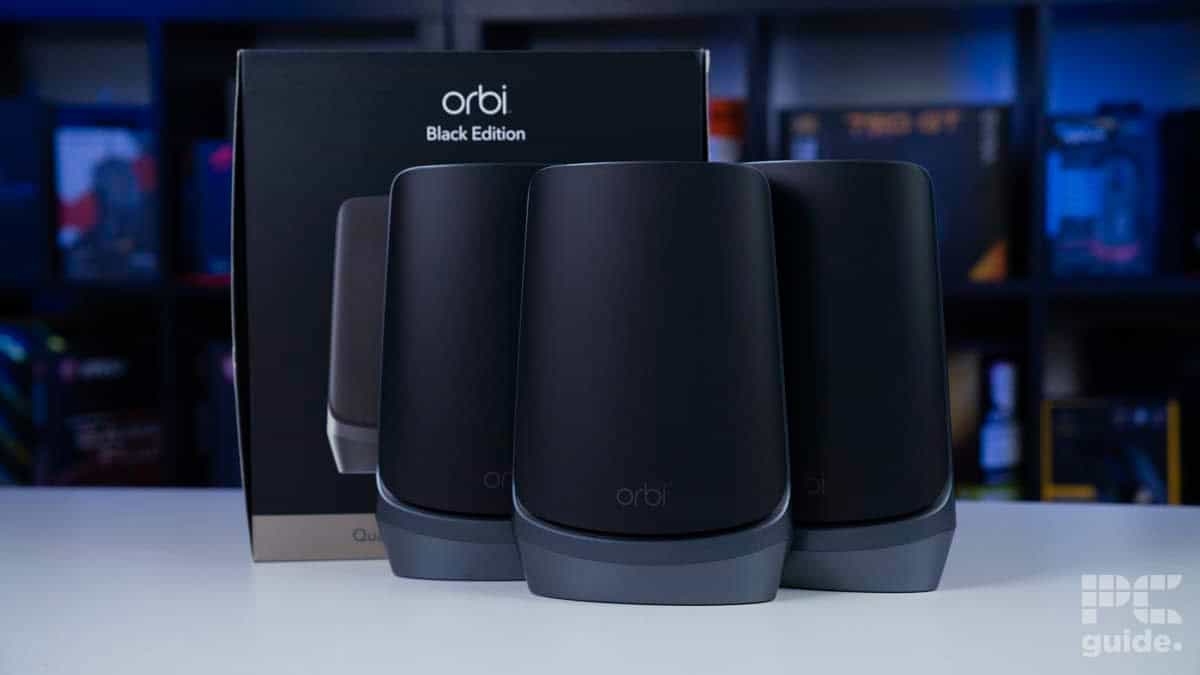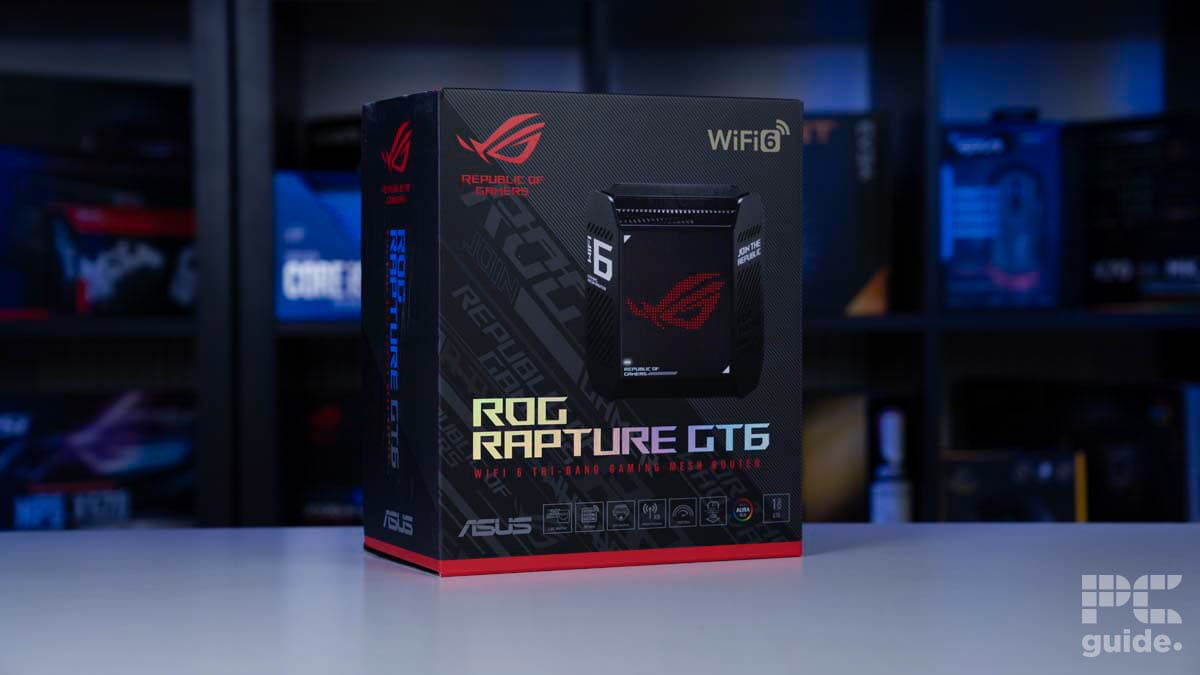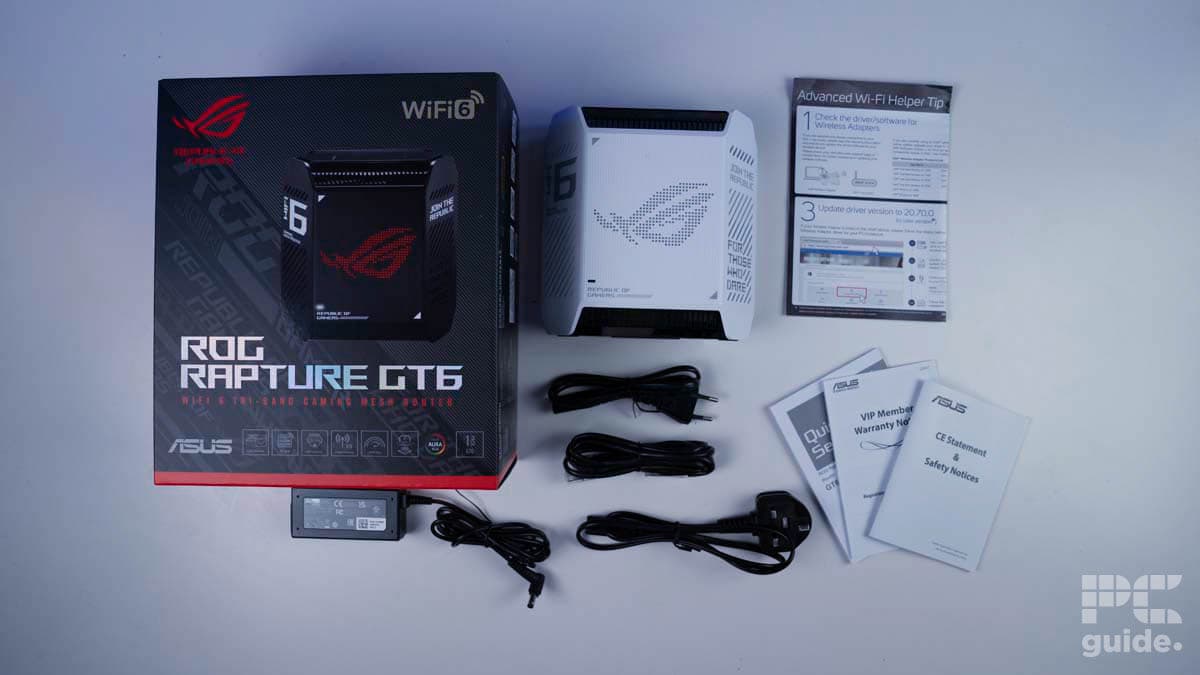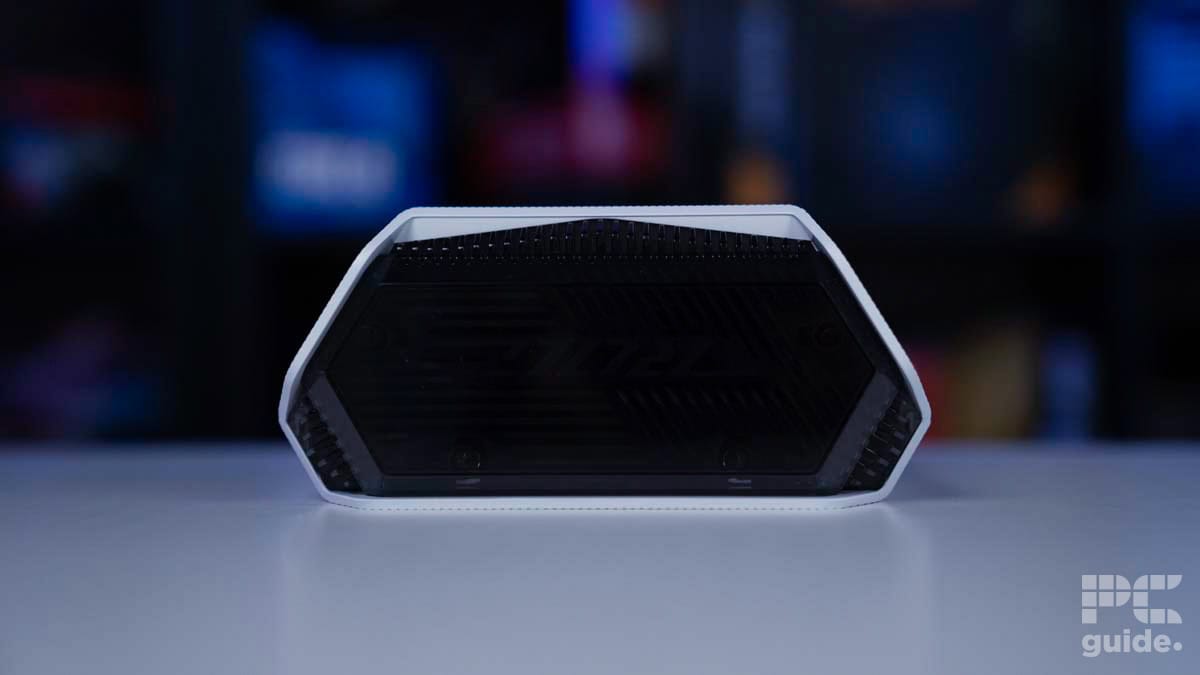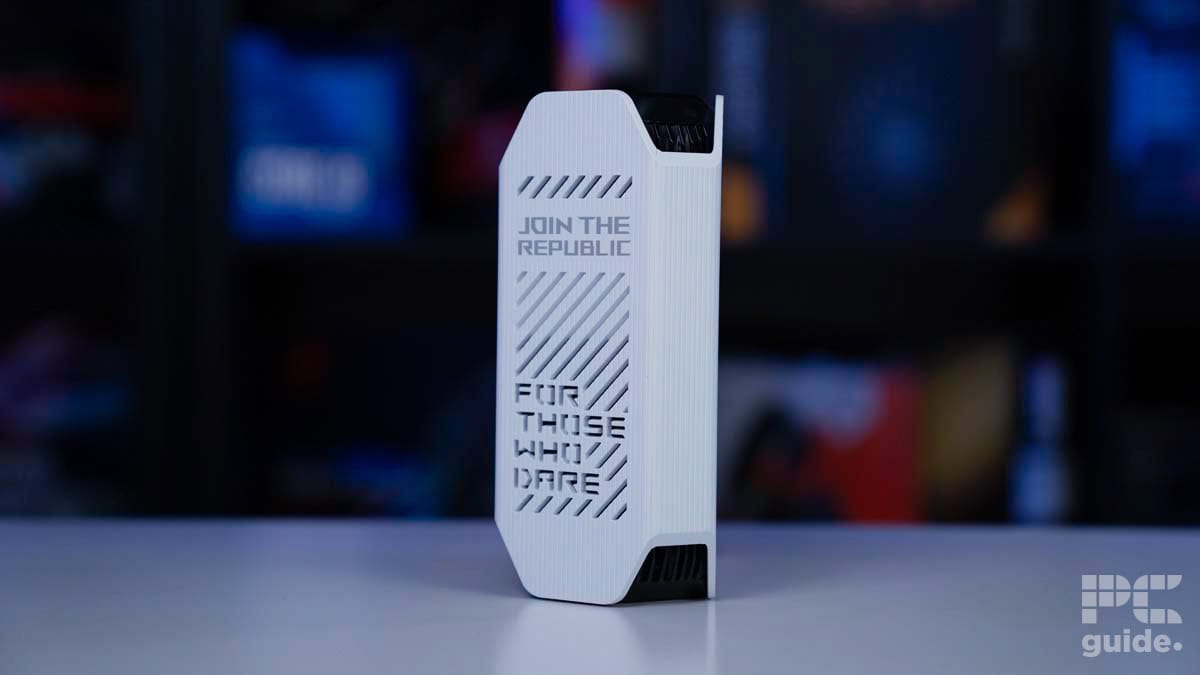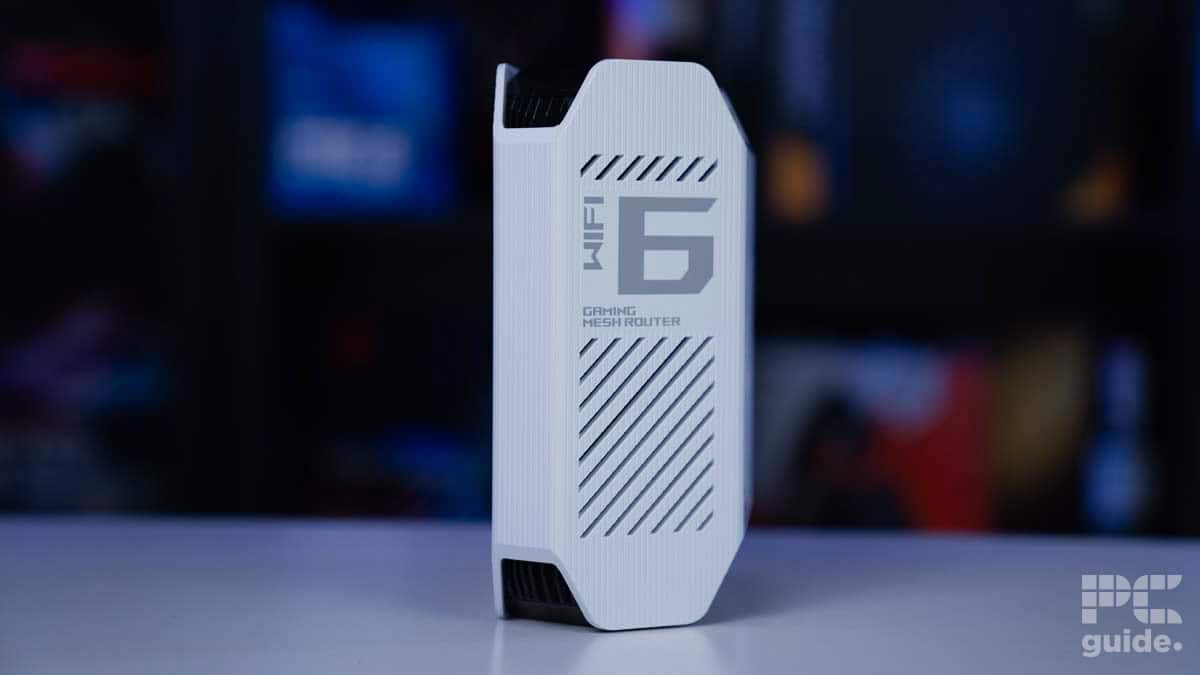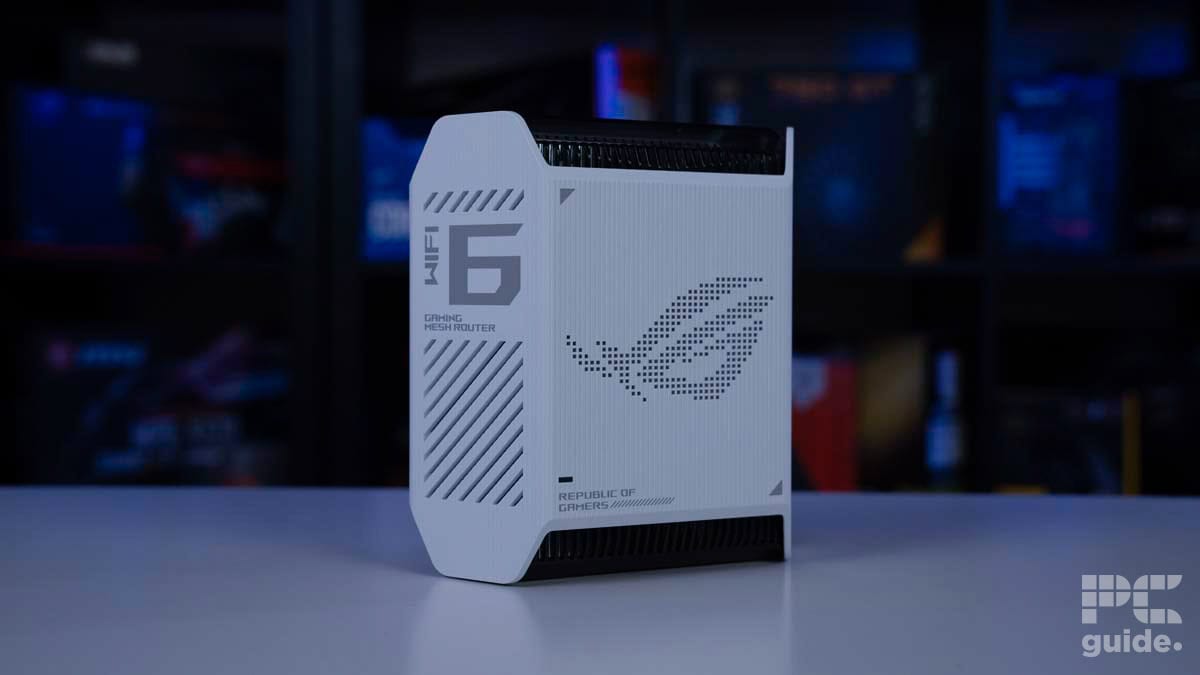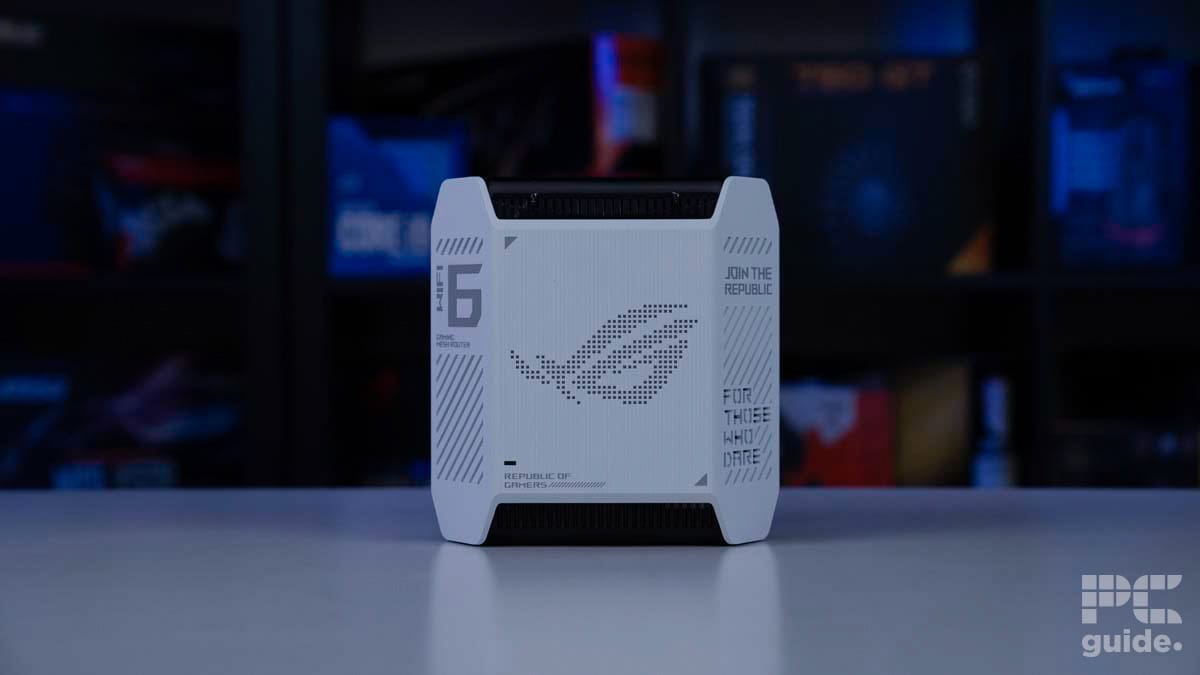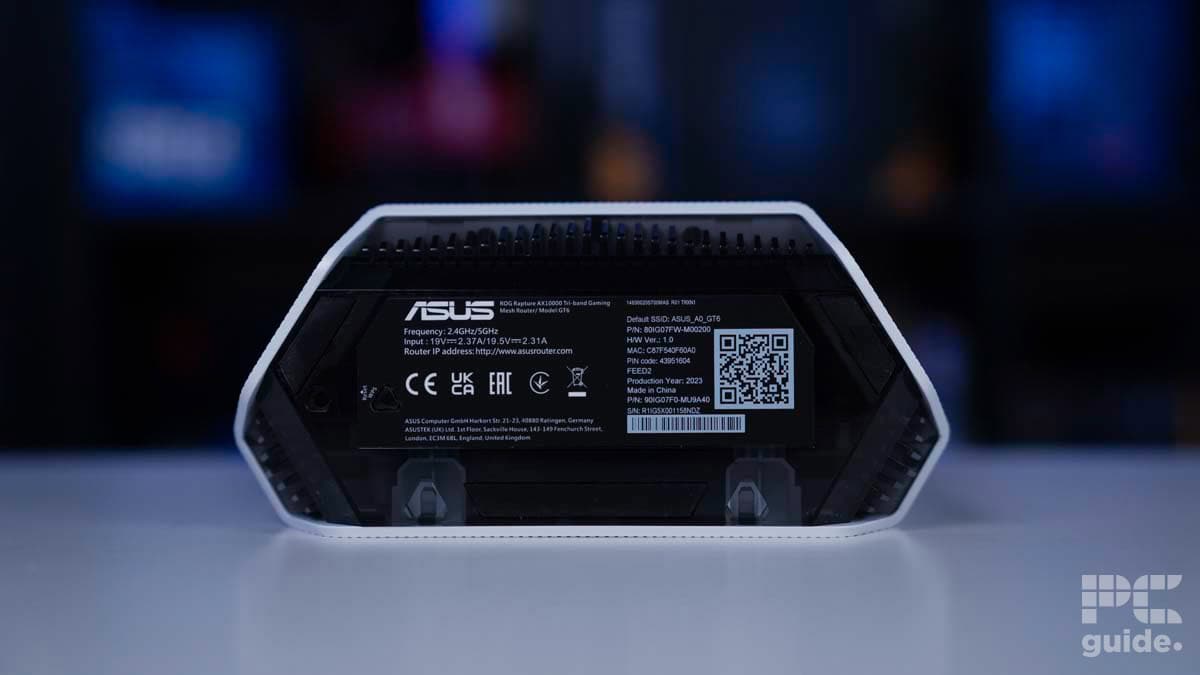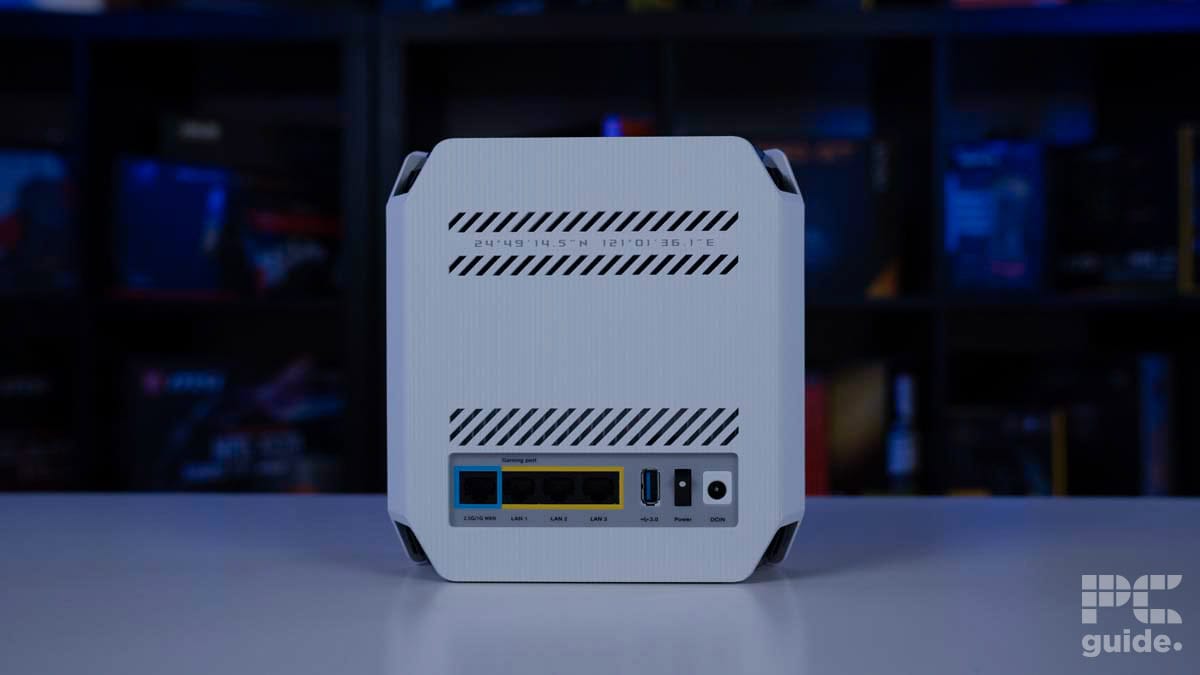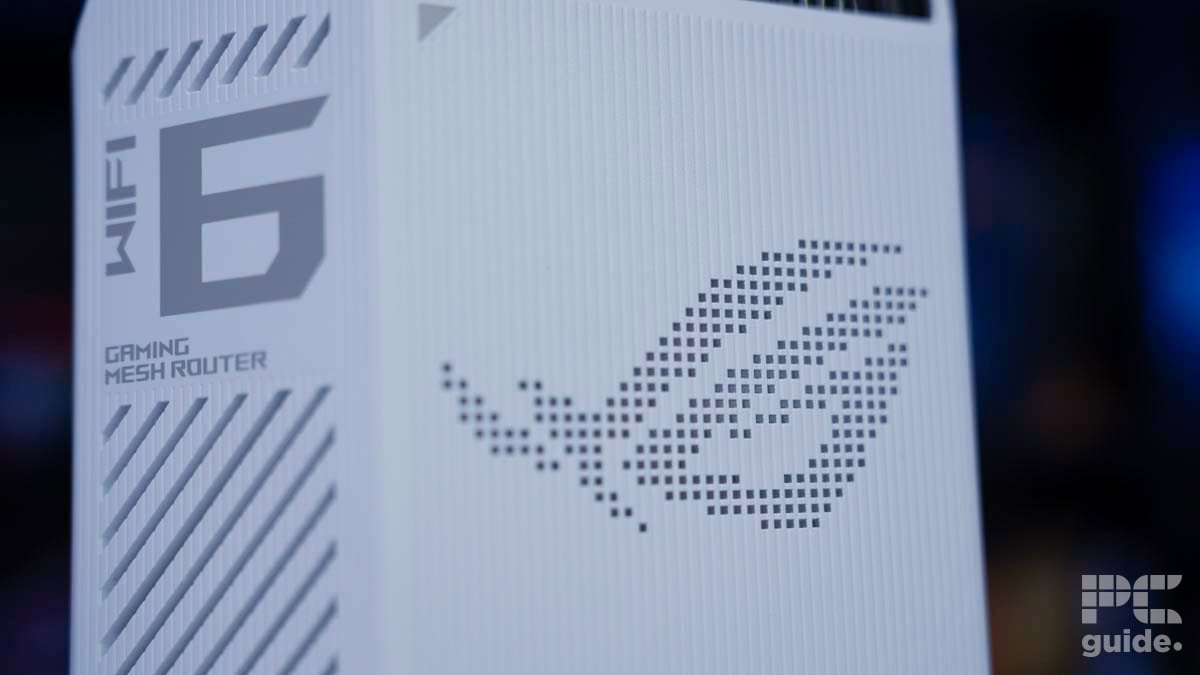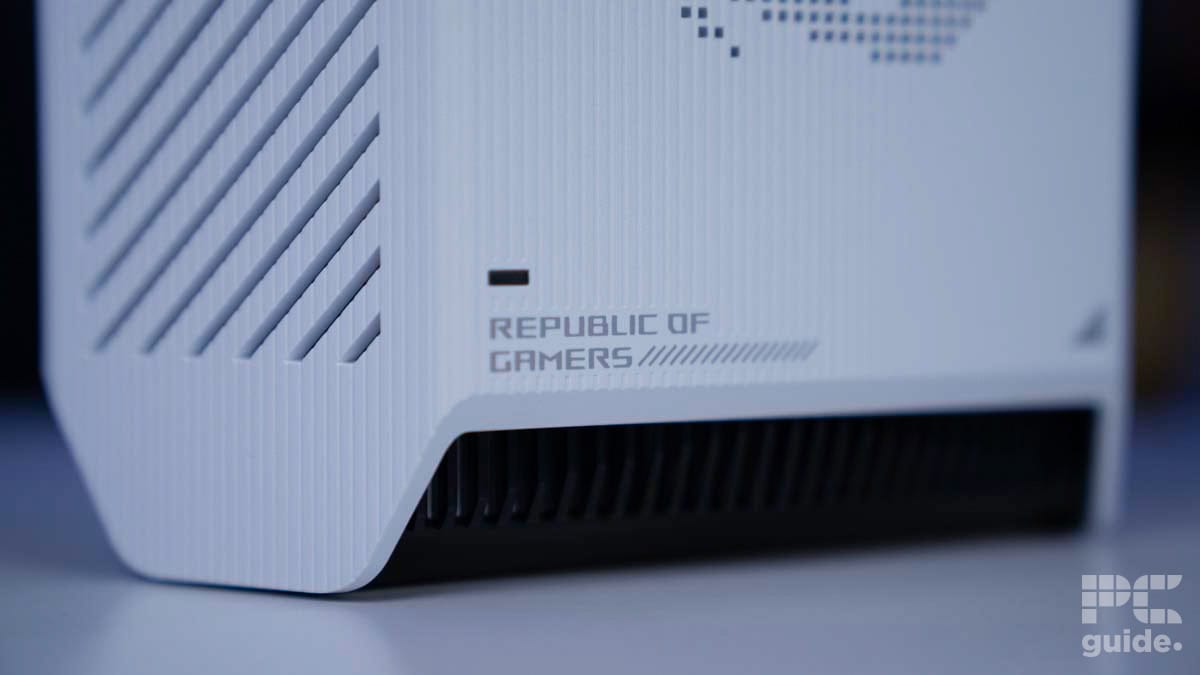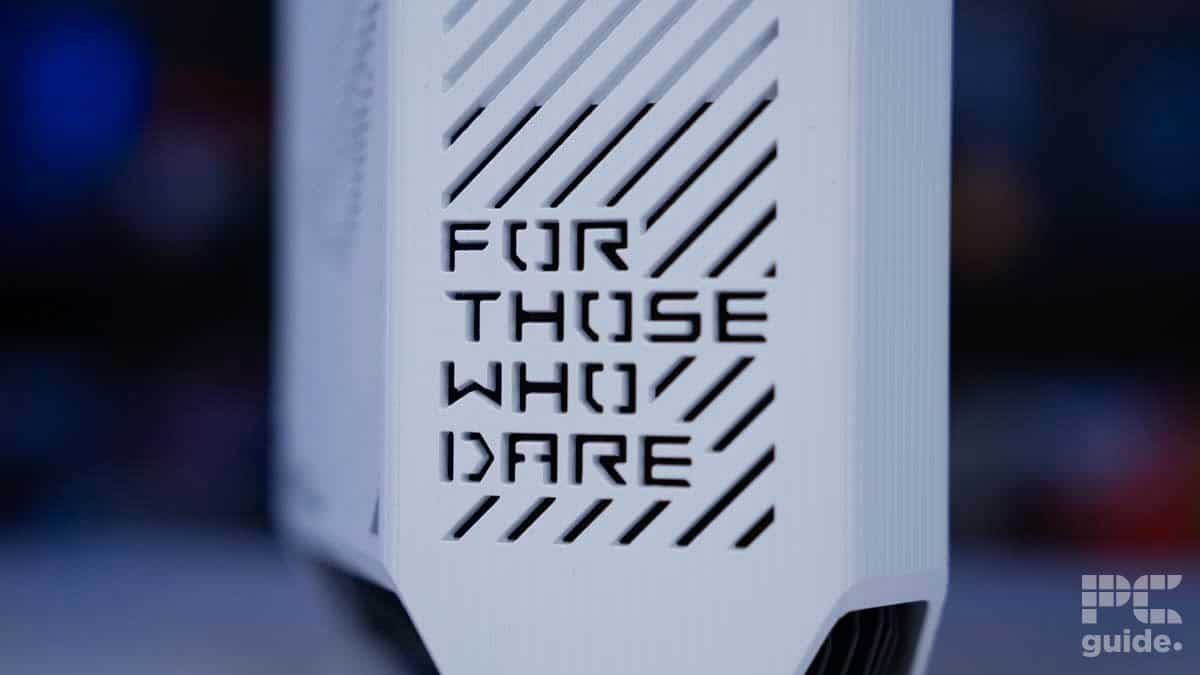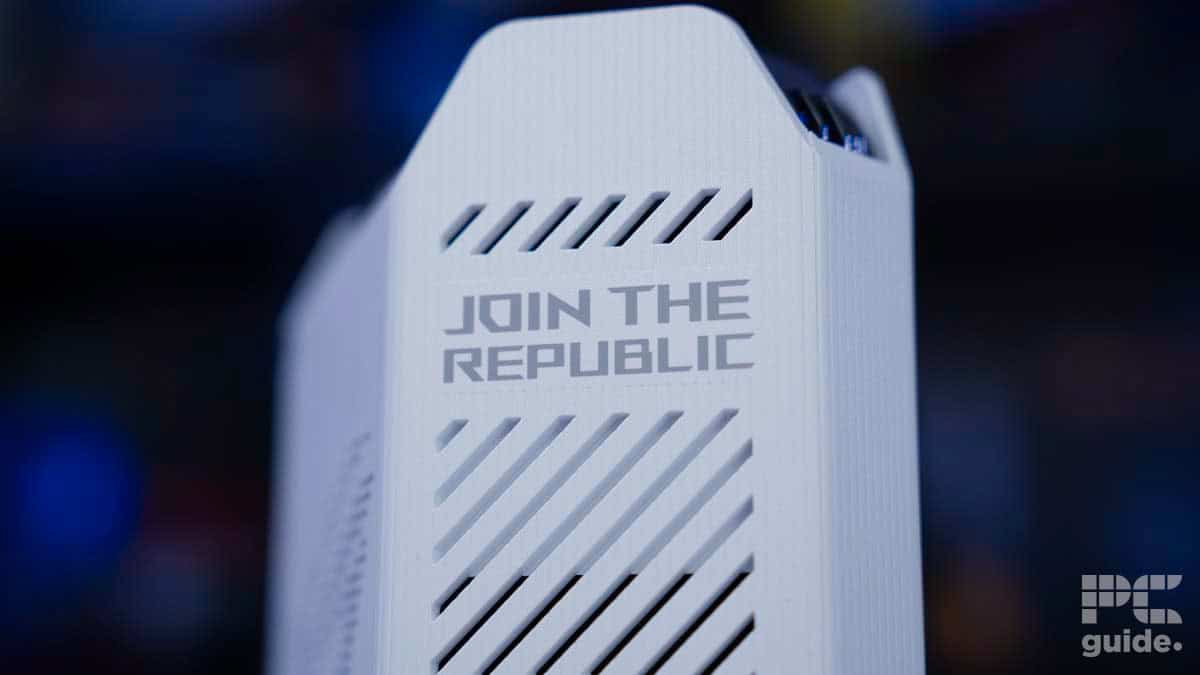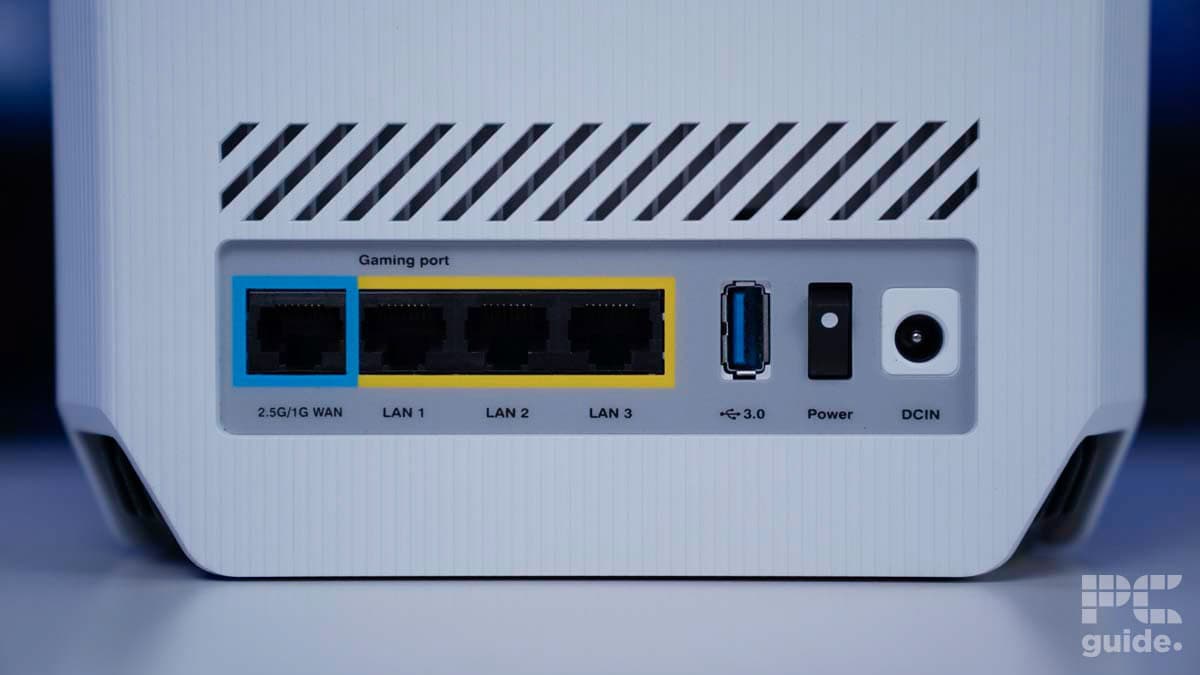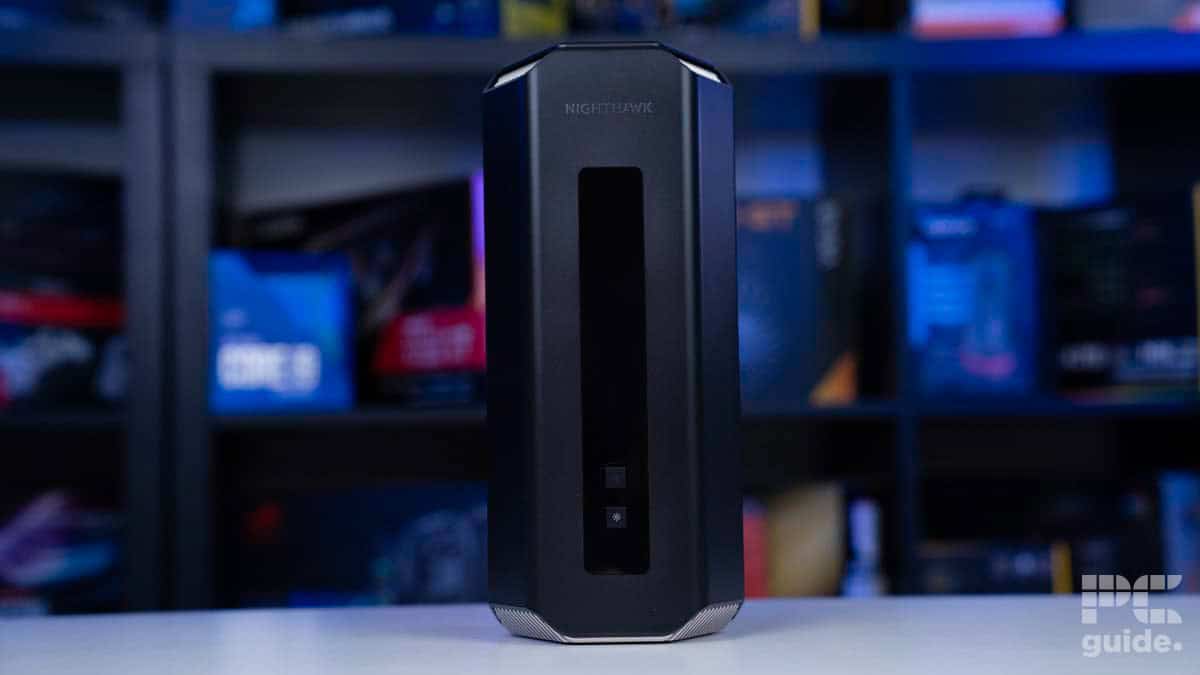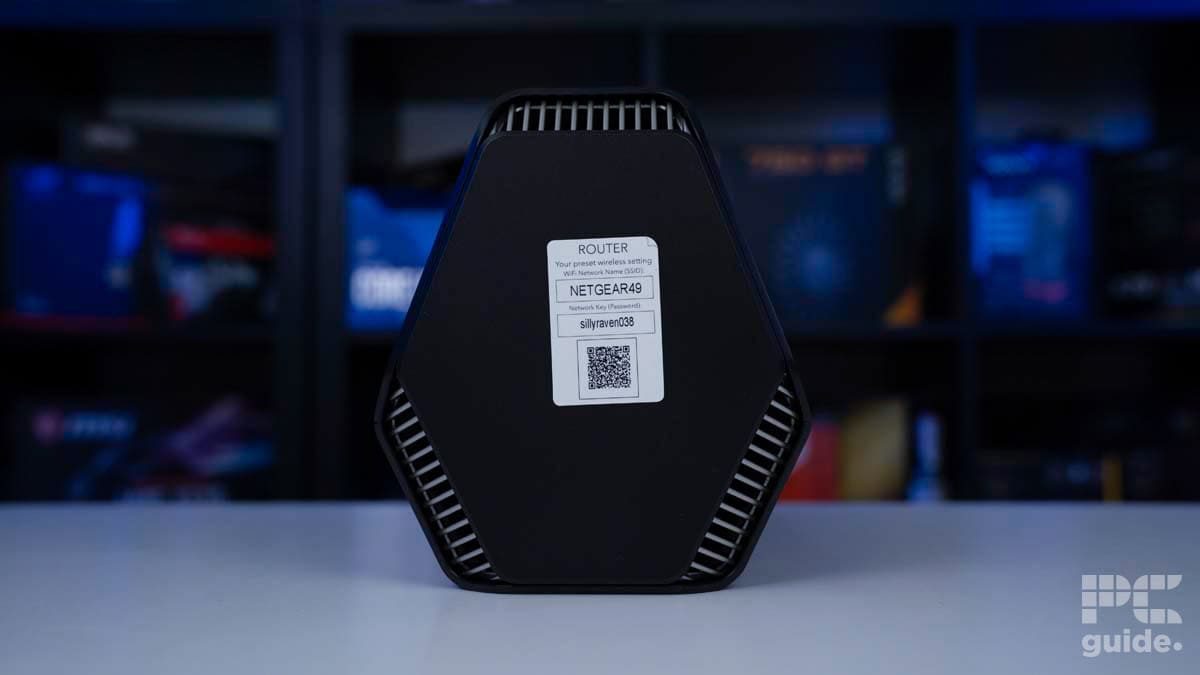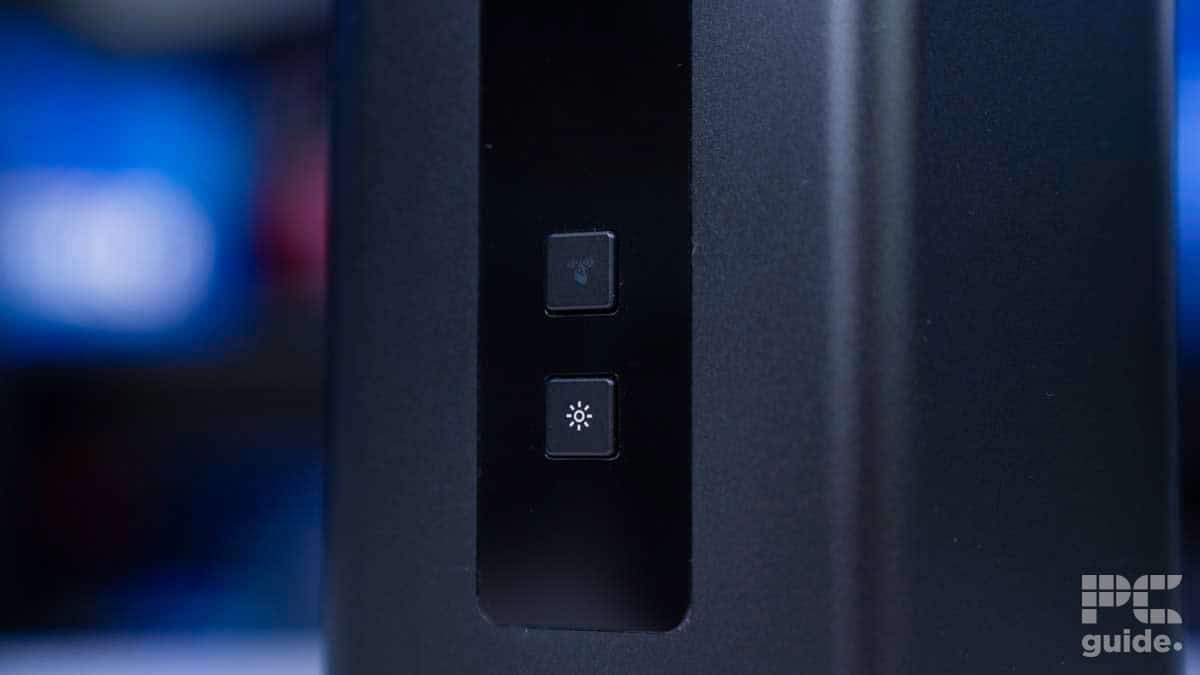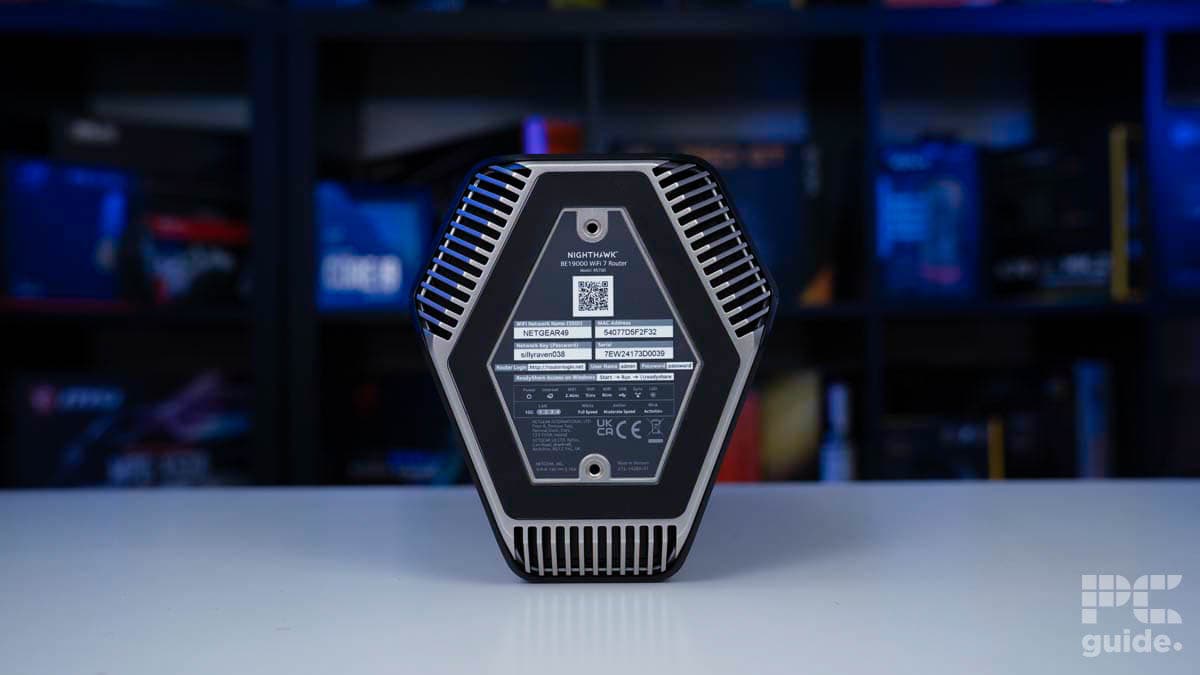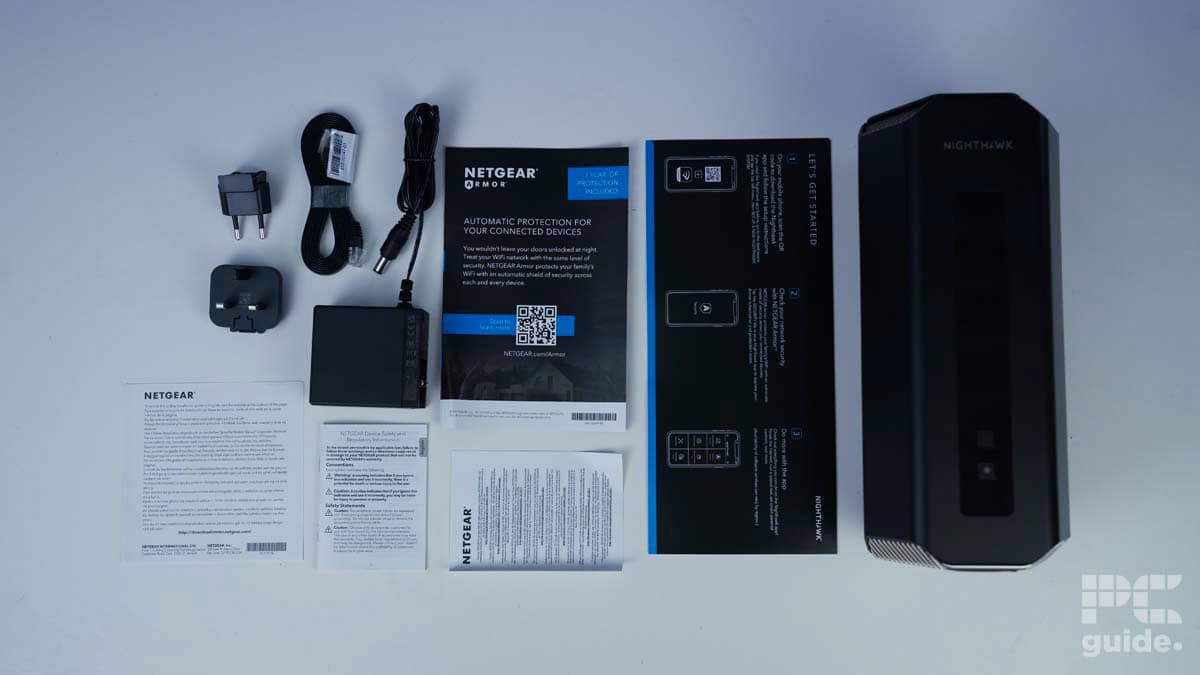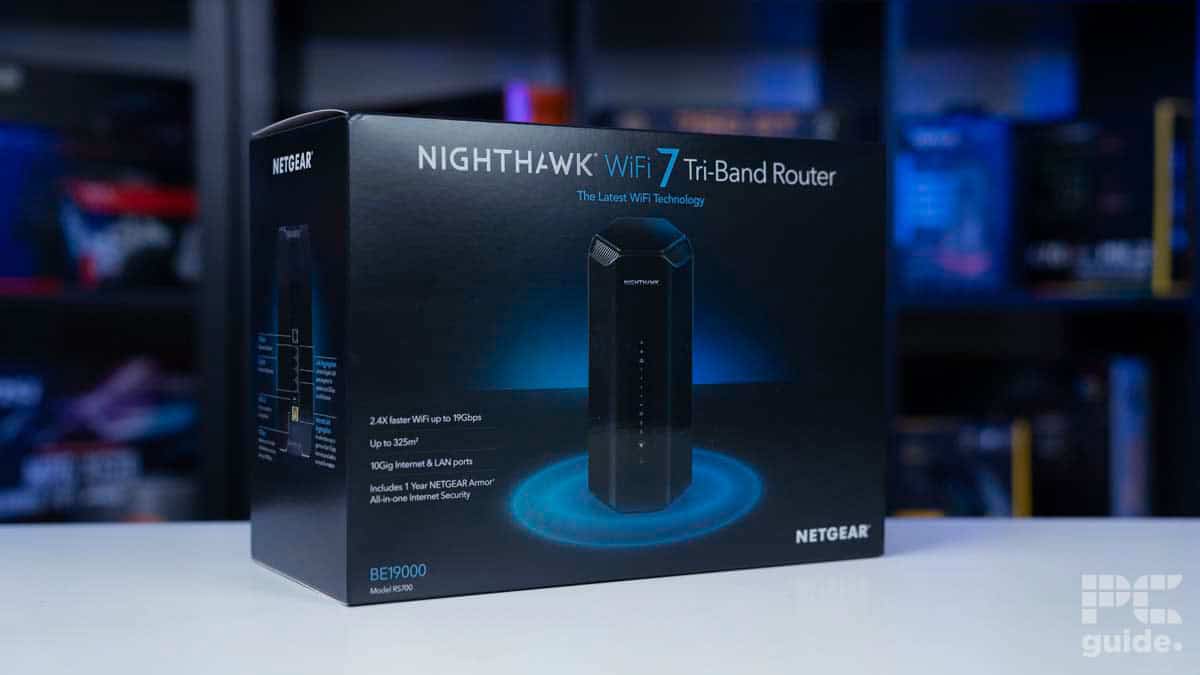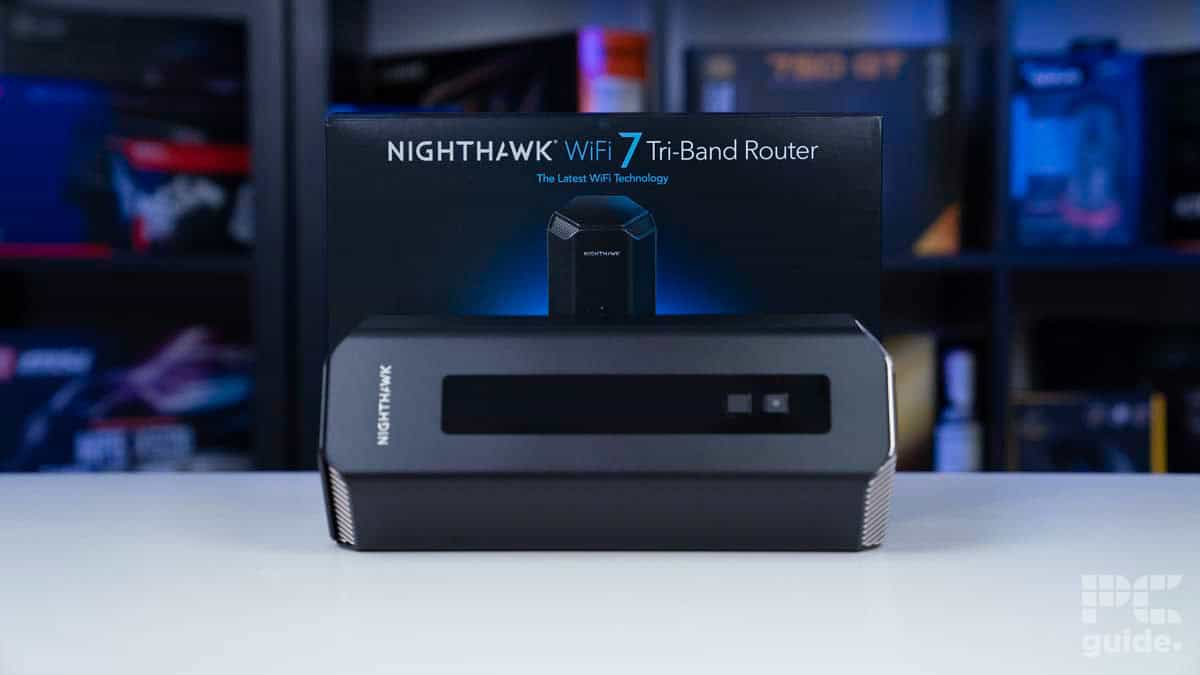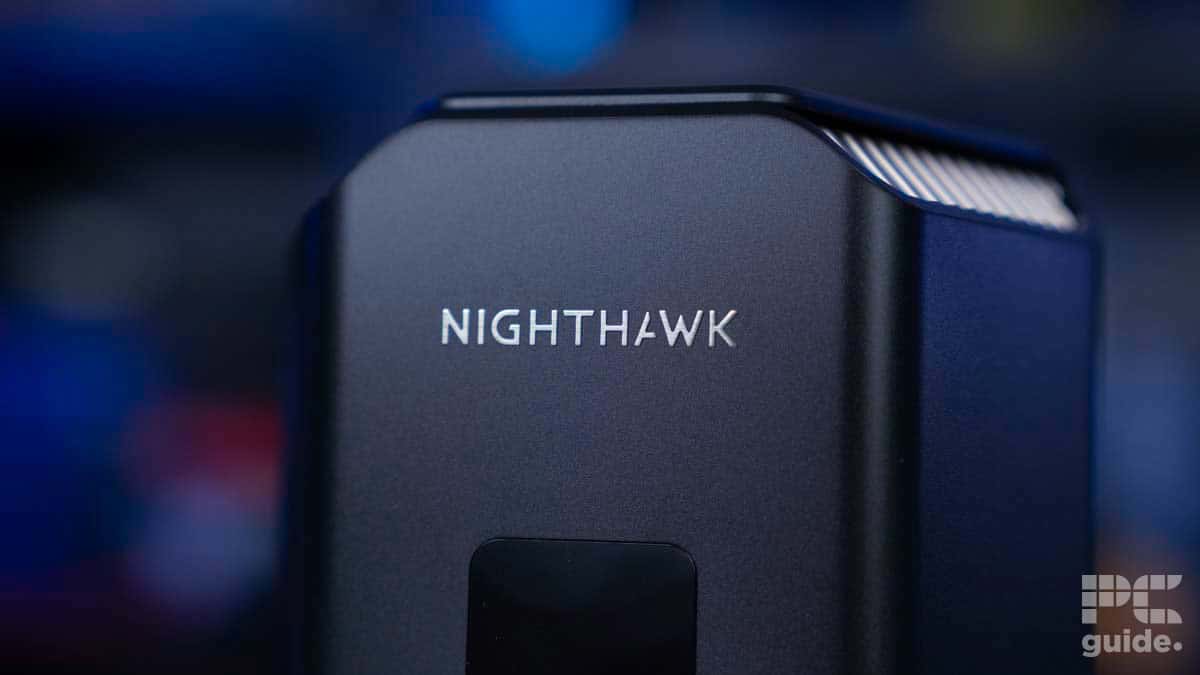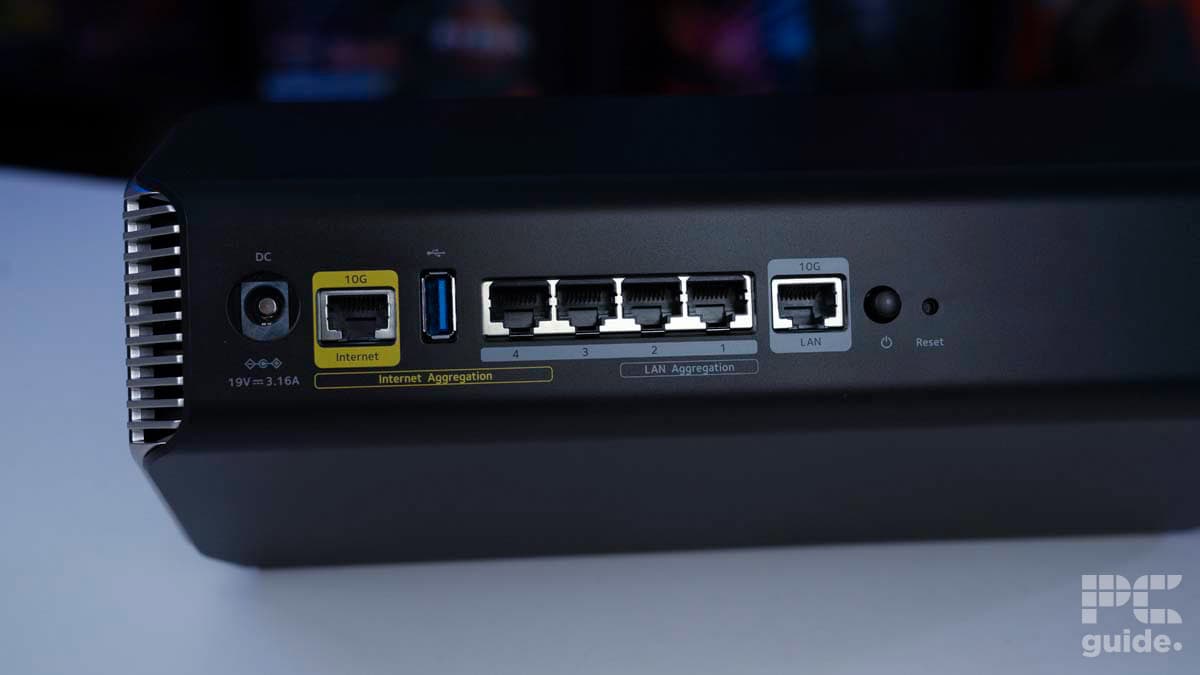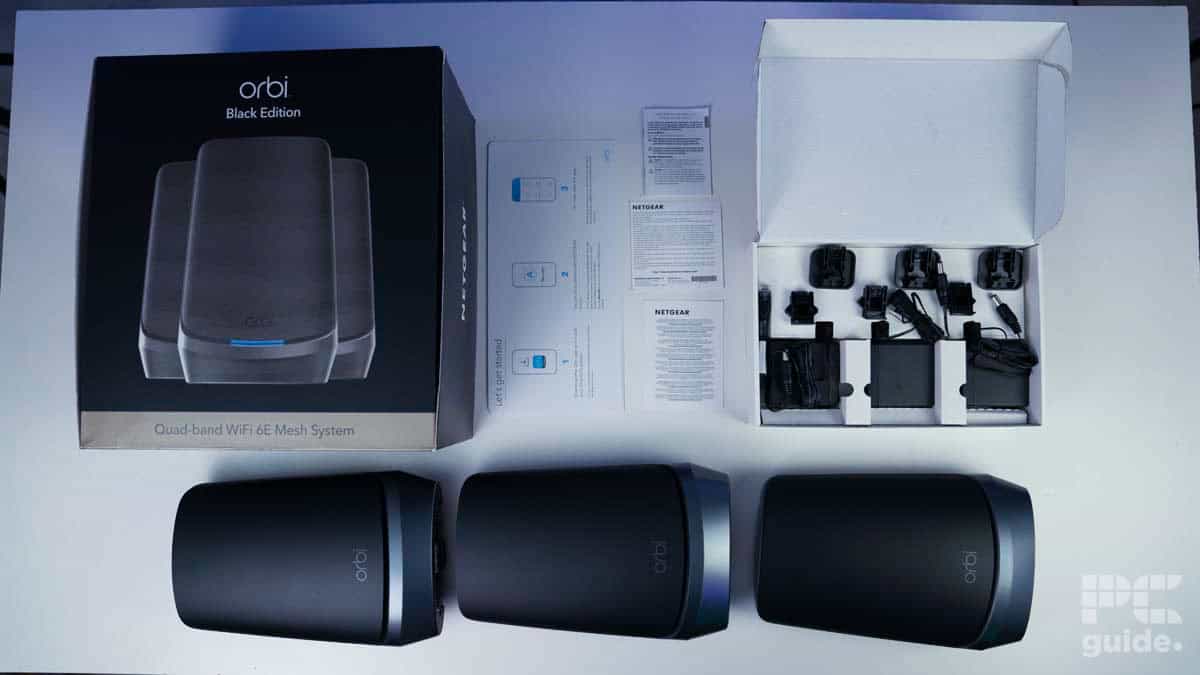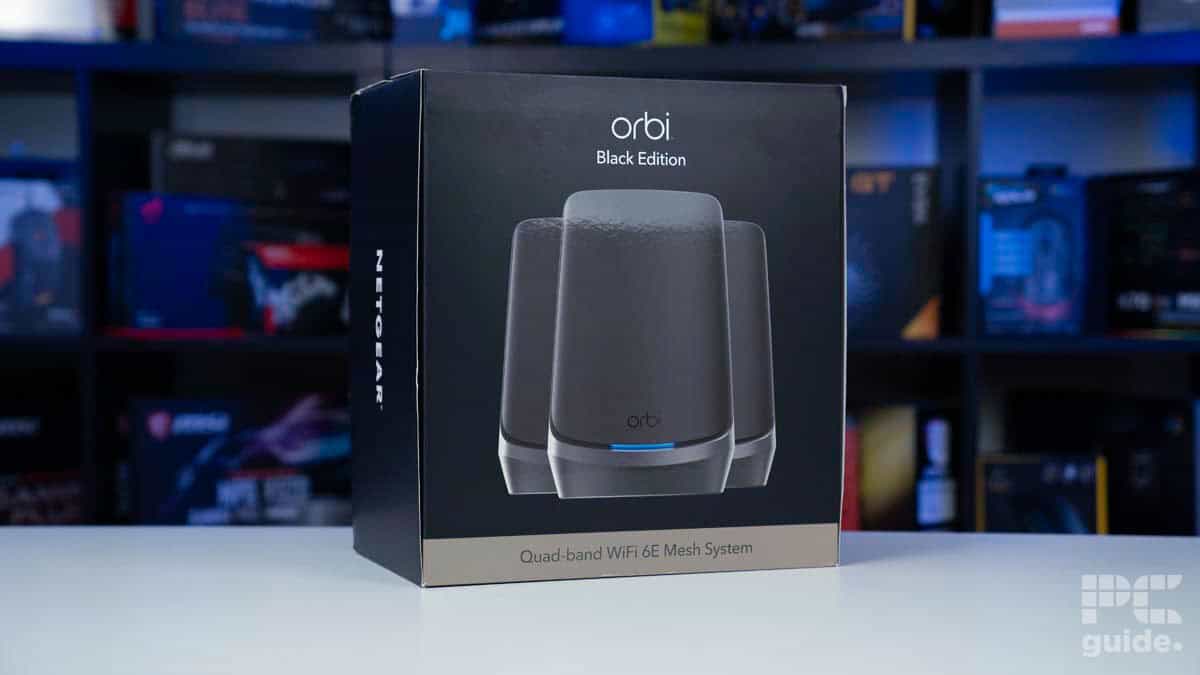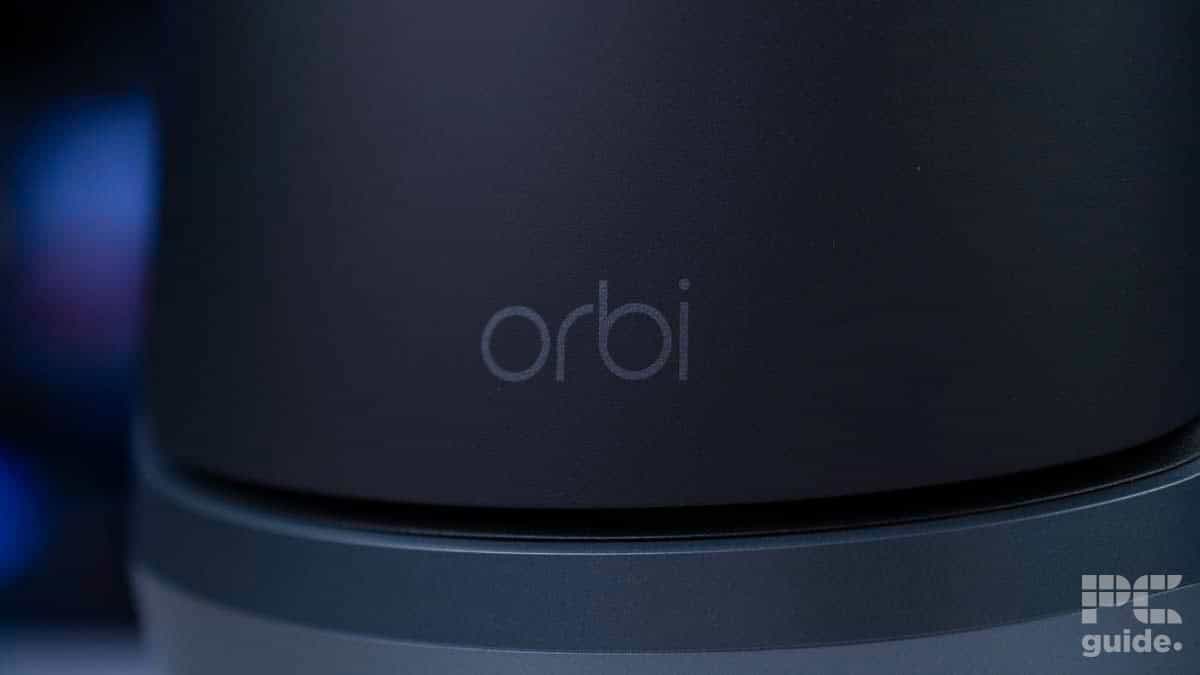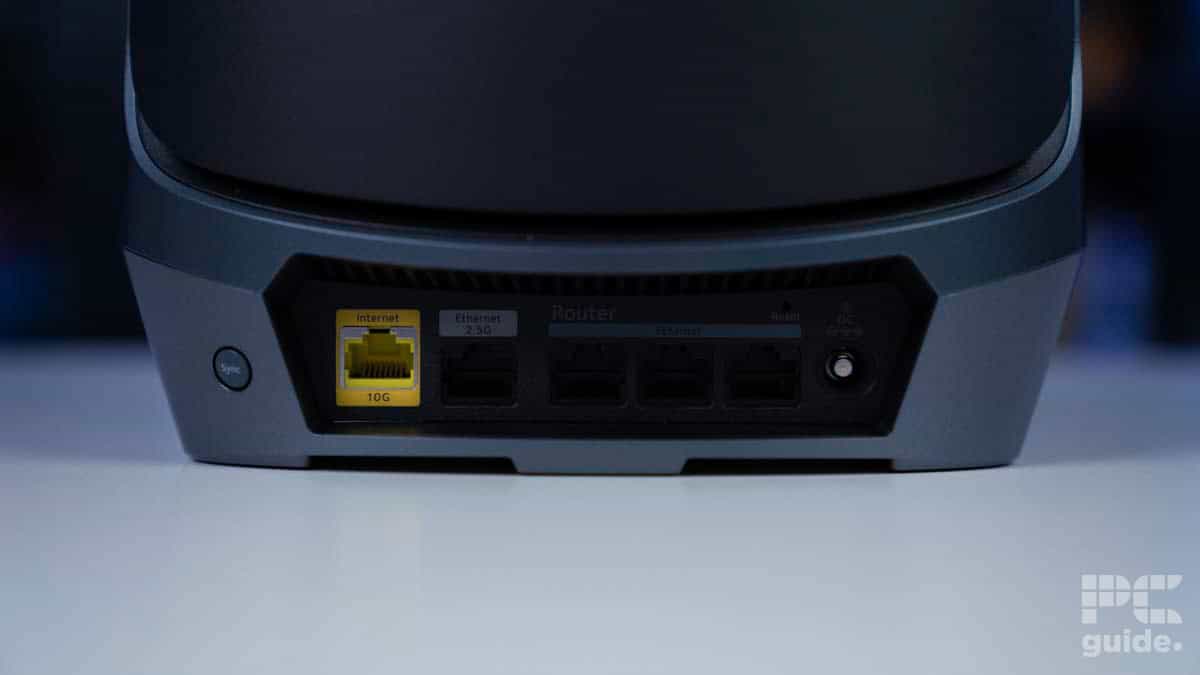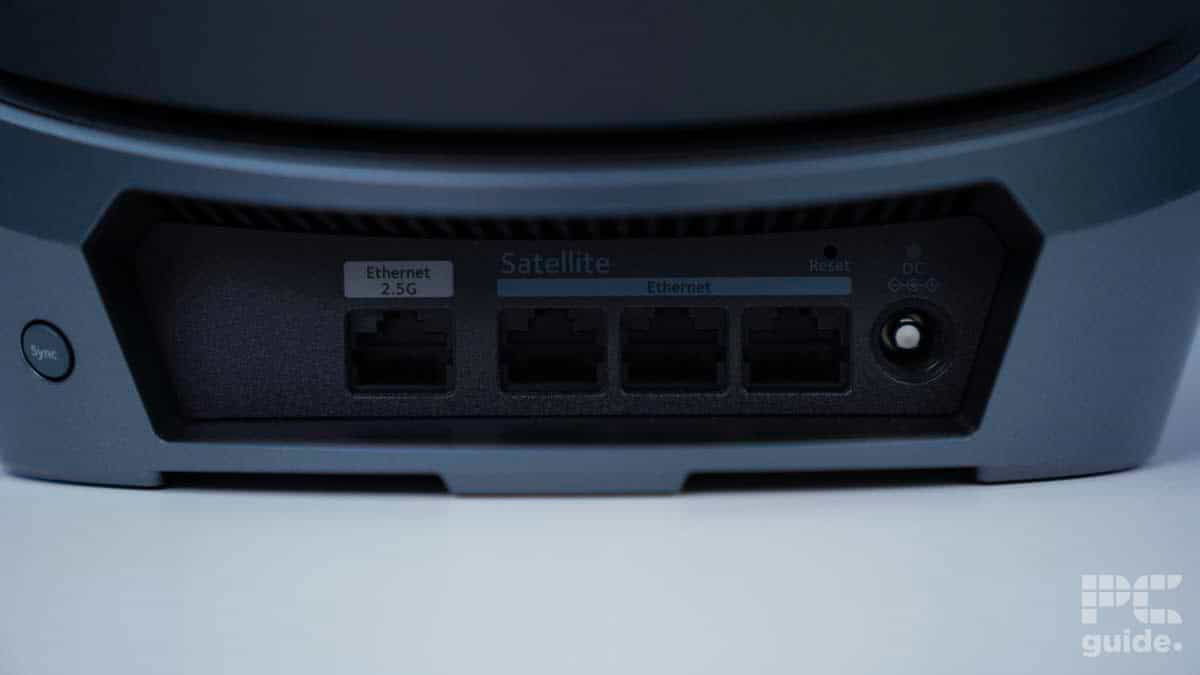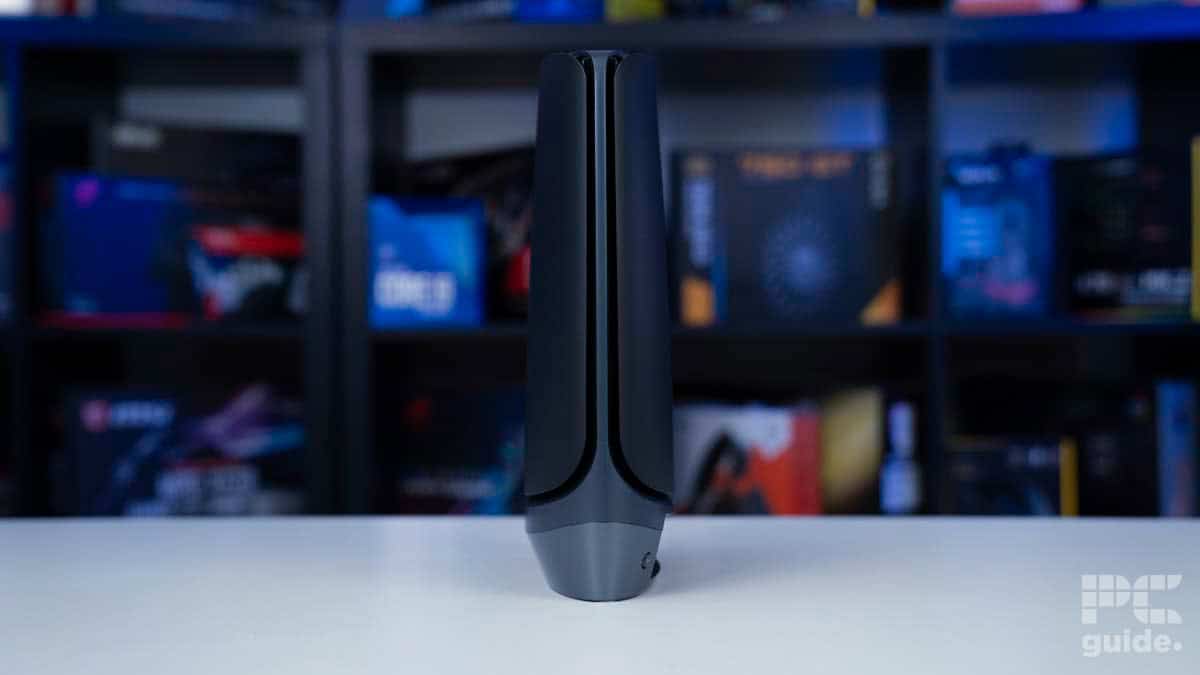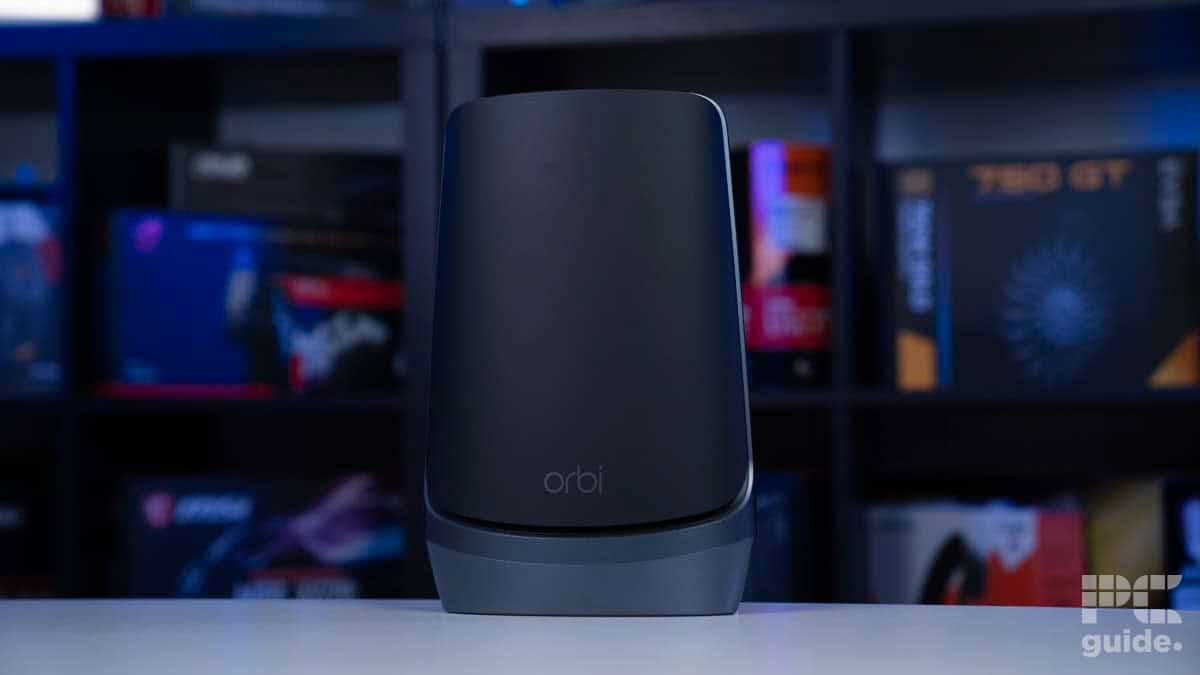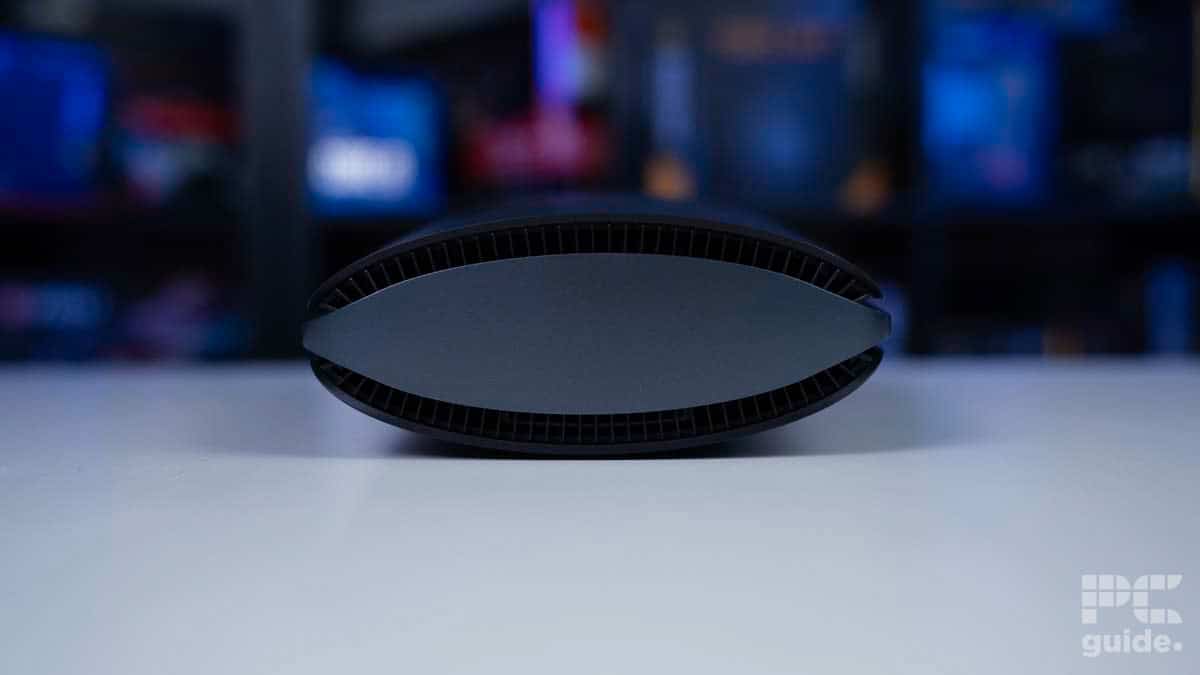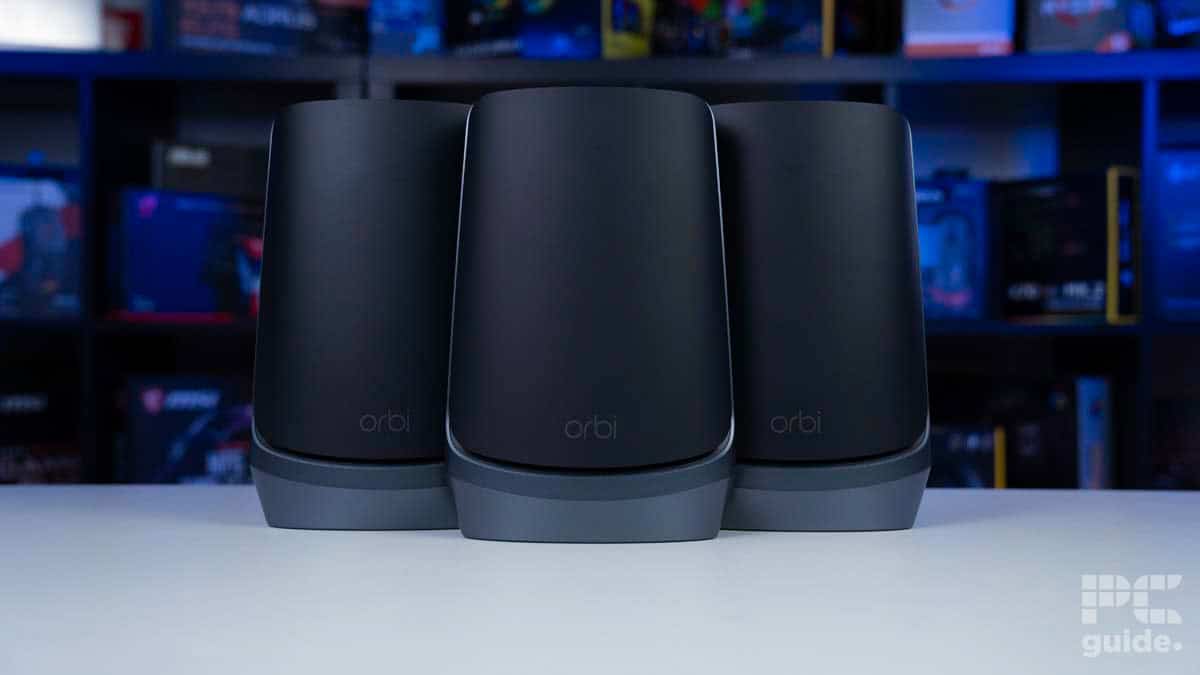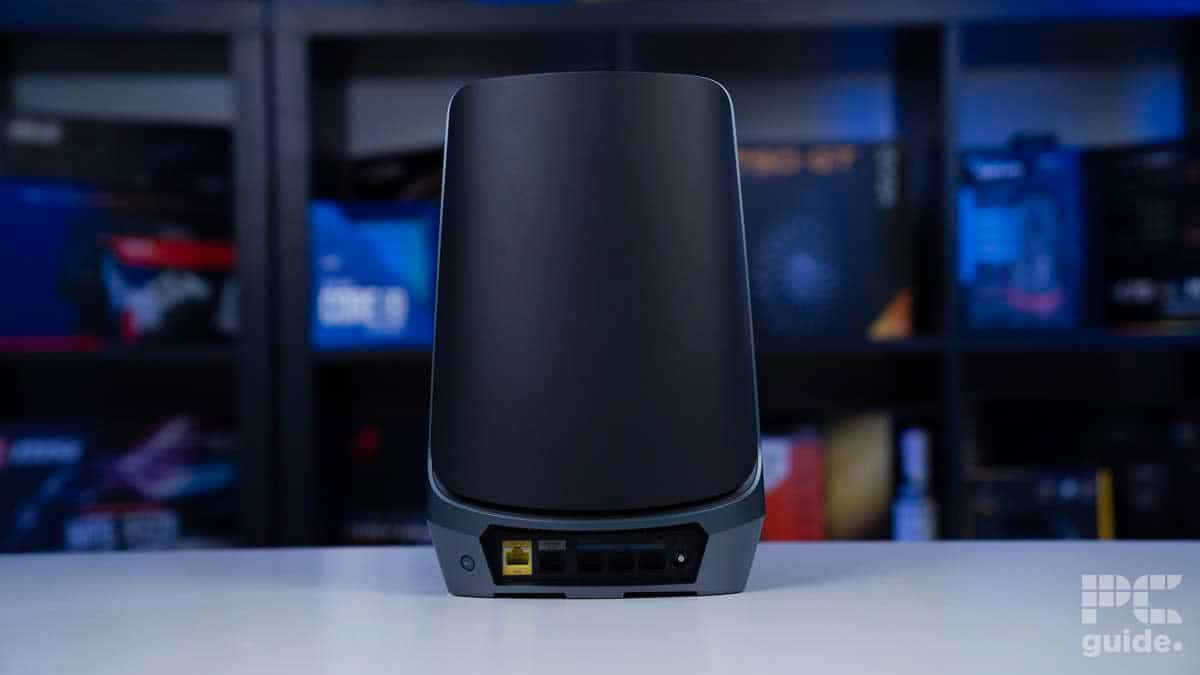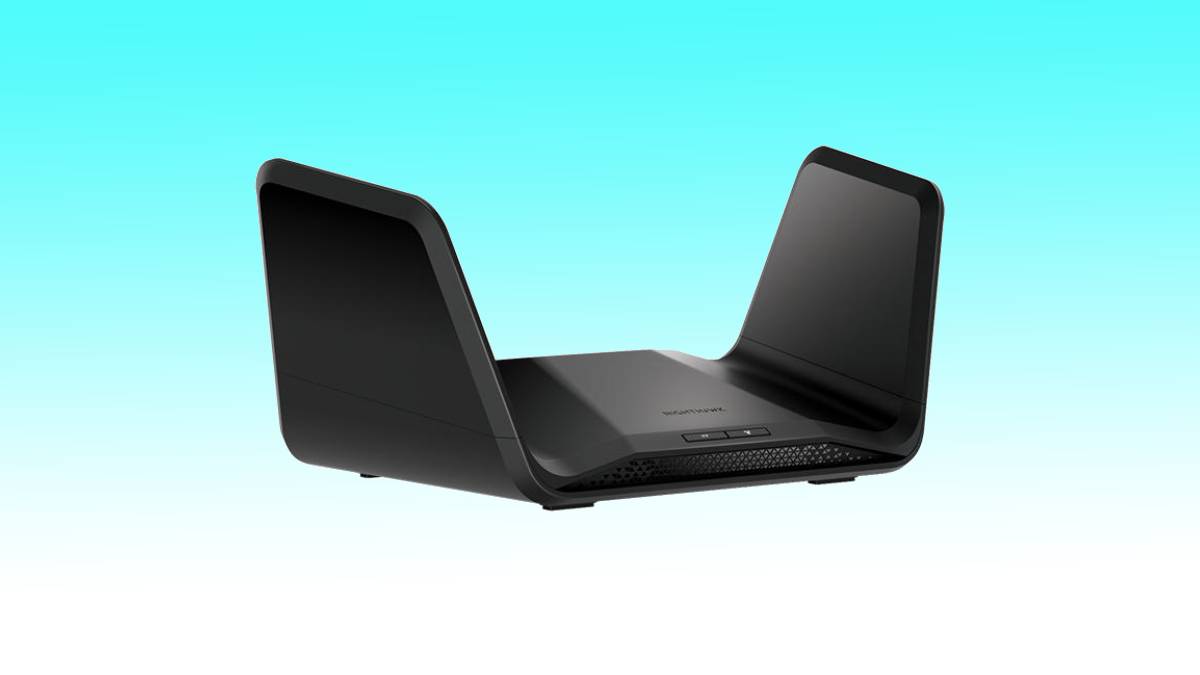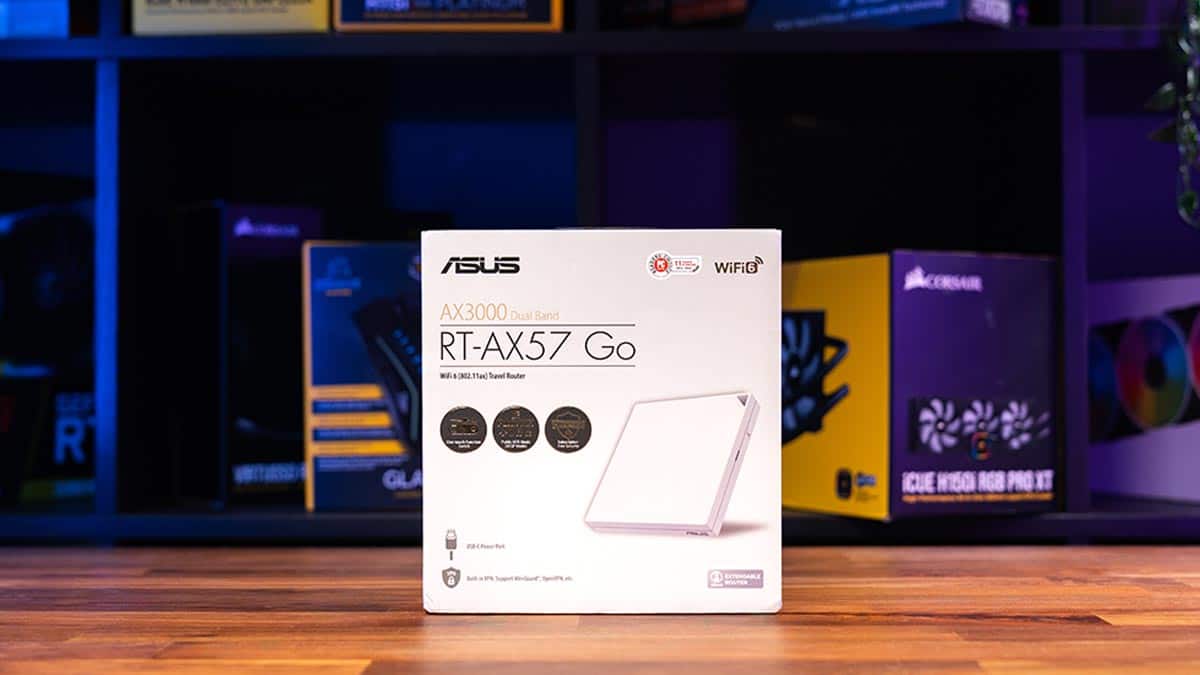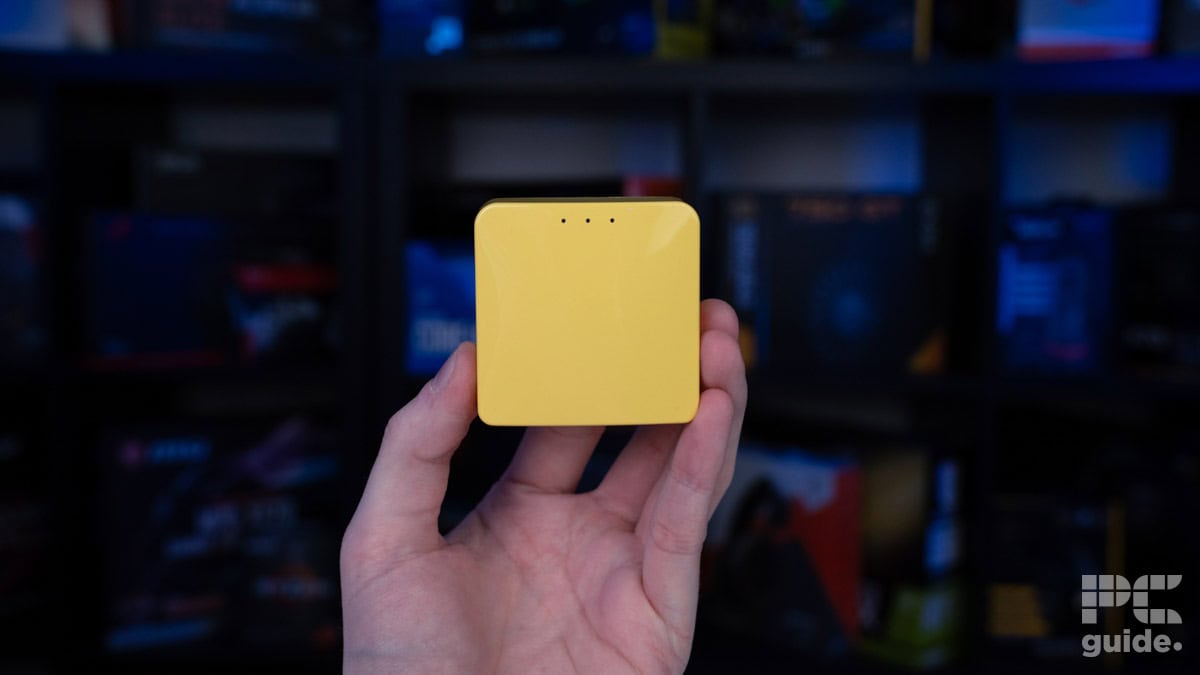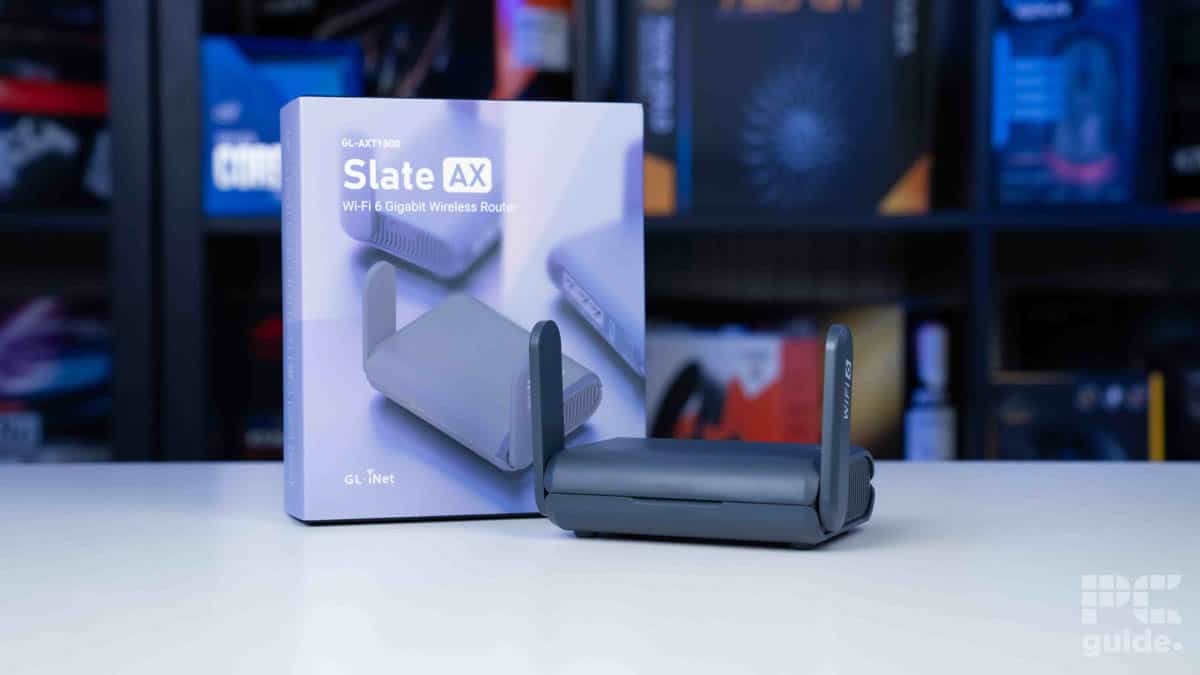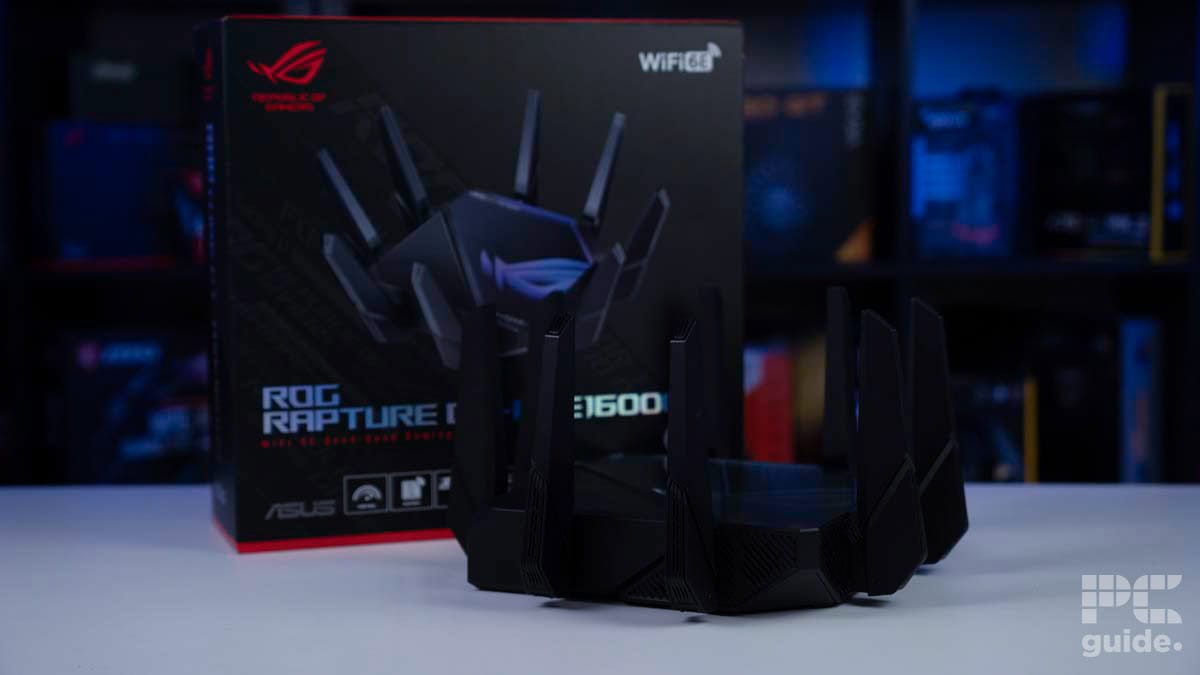Routers come in all shapes and sizes, which means they have different ranges. Some cover an area of 1,000 sq. ft., which is fine for a small apartment, while others cover 3,500 sq. ft. and above, which is perfect for medium to large houses and offices. Mesh routers push that limit to the extreme as they can cover anywhere from 5,000 sq. ft to 12,000 sq. ft. but also come at a high price.
There are tons of options and the more you dive into it, the more confusing it gets, and if you can relate to that feeling, we understand. So, to help you out and kick off your buying journey in the best possible manner, we put together this in-depth guide that lists multiple options along with their details, reviews, and pros and cons. So, let’s get right into it, shall we?
-
Best Wi-Fi router for long-range overall
ASUS ROG Rapture GT6 – 1 Pack, White
- Standard: WiFi 6
- Frequency Bands: 2.4GHz, 5GHz x2
- Max Speed: 10Gbps
- LAN Ports: 3x 1Gbps

-
Best premium Wi-Fi router for long-range
Netgear Nighthawk RS700S WiFi 7 (BE19000)
- Standard: WiFi 7
- Frequency Bands: 2.4GHz, 5GHz, 6GHz
- Max Speed: 19Gbps
- LAN Ports: 1x 10Gbps, 4x 1Gbps

-
Best mesh Wi-Fi router for long-range
Netgear Orbi RBKE963B WiFi 6E Mesh Black
- Standard: WiFi 6E
- Frequency Bands: 2.4GHz, 2x 5GHz, 6GHz
- Max Speed: 10.8Gbps
- LAN Ports: 1x 2.5Gbps, 3x 1Gbps (Router & Satellites)

How we picked
To find the best long-range router, we used our expertise to select items based on key specs, such as speeds, coverage, wireless standards, security, form factors, weight, and additional features. We’ve also delved into and weighted market sentiment and user views to ensure our selections align with users’ experiences with these products.
However, we don’t rely solely on specifications and reviews that anyone can read. We conduct in-house testing to check their signal strength, speed, and file transfer speed. If you’re interested in learning more about our process, check out our How We Test Routers guide for a more in-depth understanding.
Our top picks

- Standard: WiFi 6
- Frequency Bands: 2.4GHz, 5GHz x2
- Max Speed: 10Gbps
- LAN Ports: 3x 1Gbps
- WAN: 1x 2.5Gbps
- CPU: 1.7GHz tri-core
- Memory: 256MB Flash, 512MB DDR4 RAM
- USB: 1x 3.2Gen A-type
- Dimensions: 172.3 x 78.1 x 176.75 mm
- Weight: 880g
- Excellent range and wall penetration
- It has a multi-gig WAN port
- It has excellent security and parental control features
- It works with the Wi-Fi 6 standard
- A single node only covers 2,900 sq. ft., and you’ll need two to cover 5,800 sq. ft.
- The gamer look and design might not be the best for a professional setting
The ASUS ROG Rapture GT6 is an excellent router that covers a lot of bases with its decked-out hardware, speed, and coverage. We tested for all these factors in our Rapture GT6 review and weren’t disappointed with the results.
For starters, this router is powered by a 1.7 GHz tri-core processor and 512 MB of DDR4 RAM. What this means is that it has enough processing power to handle the various networking demands without running out of stamina. On top of that, it has tri-band functionality, meaning you get one 2.4 GHz band and two 5 GHz bands.
So, what this does is allow you to dedicate a band for guests or IoT devices, keeping the remaining frequencies free from load. This helps avoid congestion issues and ensures you get the full bandwidth.
The Rapture GT6 has a coverage of 2,900 sq. ft, which should be more than enough for most offices and houses. However, you can double the coverage by including another node, bringing it to 5,800 sq. ft., which is enough to cover most large houses. On top of that, there are nine strategically placed internal antennas to eliminate dead zones and prevent inconsistency. Add to this ASUS’s RangeBoost Plus technology, and you’ve got a killer combination that should cover you for a range of tasks, whether gaming, working, or streaming.
Focusing on the mesh capabilities to improve the range and speed it has a lot of features to take advantage of.
PCWer
As for its performance and range, its 2.4 and 5 GHz bands were able to connect to the 90ft mark, which has two rooms and four walls between the device and the router. So, its advertised 5,800 sq. ft coverage isn’t just a gimmick.
The 2.4 GHz frequency managed download speeds of 59.4 to 0 Mbps at 90ft and upload speeds of 40 to 0 Mbps. While it did manage to connect at the farthest distance, its performance wasn’t the best, but adding another node to the equation should take care of this issue.
5 GHz, on the other hand, managed download speeds of 213 to 51.8 Mbps at 90 ft and upload speeds of 290 to 12.9 Mbps. So, the performance gap between the two frequencies is clearly visible, but it isn’t surprising since 5 GHz has a higher bandwidth and isn’t affected by interference.
This router also features three 1G LAN ports, one 2.5G WAN port, and a USB 3.2 Gen 1 port. So, if you want a wired connection for seamless gaming or working, the GT6 provides plenty of ports for you to connect with to ensure that you get the full bandwidth of your high-speed internet connection.
Overall, the ASUS ROG Rapture GT6 is one of the best Wi-Fi routers for long-range, regardless of the task at hand. You always have the option to increase its range via software or by purchasing another node. On top of that, it also makes for a great gaming router with its triple-level game acceleration feature, which reduces latency and boosts speeds.
What users say
According to Amazon reviews, this router has excellent performance and range. One reviewer said: “The router performance is great. In proximity to the router, I can get 500-600 Mbps WiFi internet download speed with 2016 Macbook Pro.” Another user stated: “Honestly the best routers I’ve ever purchased; this Asus actually does what it claims.”

- Standard: WiFi 7
- Frequency Bands: 2.4GHz, 5GHz, 6GHz
- Max Speed: 19Gbps
- LAN Ports: 1x 10Gbps, 4x 1Gbps
- WAN: 10Gbps
- CPU: Quad-core 2.6GHz
- Memory: 512MB NAND Flash and 2GB RAM
- USB: 1x USB 3.0 Type-A
- Dimensions: 281.7 x 124.0 x 142mm (11.1 x 4.9 x 5.6in)
- Weight: 1.635kg (3.61lb)
- Future proof with Wi-Fi 7 standard
- It can support up to 200 devices across three frequencies
- It has a range of 3,500 sq. ft.
- It comes with a hefty price tag
- For casual users, this router is overkill
- The Wi-Fi 7 standard isn’t widely used right now
If spending top dollar isn’t an issue and you want the best router for long-range and coverage, we recommend the NETGEAR Nighthawk RS700S. Not only does this support the latest Wi-Fi 7 standard, but in our RS700S review, it also showcased its prowess in signal strength, speed, and latency tests.
This router has a max speed of 19 Gbps and a 6 GHz band along with the 2.4 and 5 GHz bands. On top of that, a powerful 2.6 GHz quad-core processor and 2 GB RAM power its various networking functionalities, such as tracking packets and processing all the rules and data.
For wired connectivity, you get one 10G, four 1G LAN ports, and one 10G WAN port. So, if you have gigabit internet, you can connect your devices via Ethernet to avoid congestion and interruption issues and enjoy a seamless working and gaming experience.
According to NETGEAR, this RS700S is rated for 3,500 sq. ft. of coverage, and we tested its range in-house during our review. We checked the 2.4 and 5GHz frequencies at 10, 30, 60, and 90ft. The former was able to connect till the 60ft mark, which is at the edge of 3,500 sq. ft., while 5 GHz went all the way to 90ft, surpassing the two rooms and four walls between the router and device.
With the inclusion of the latest WiFi standard, it means you can take advantage of the little traffic and interference on those networks.
PCWer
As for its performance, 2.4 GHz managed download speeds of 206, 206, and 137 Mbps and upload speeds of 62, 50, and 22 Mbps. While 5 GHz had better results with 1200, 864, 288, and 8 Mbps download and 1080, 1080, 576, and 17 Mbps upload. So, with these speeds over a wireless connection, you should be able to effortlessly stream in 4K, play online games, and download and upload large files.
In addition, it comes with NETGEAR Armor for added protection from hackers and vulnerabilities, but that is locked behind a paywall. The good part is that you get a free trial so you can see what it is capable of and whether you want to pay for it after the trial or not.
Lastly, the RS700S is capable of supporting up to 200 devices simultaneously. This means that if you have a lot of people at your home or install this router in a small to medium office, it should be more than enough to cater to every device at short and long range. Just make sure that you have an internet plan with enough bandwidth.
What users say
According to Amazon reviews, it is being praised for its excellent performance, ease of setup, and impressive range. One reviewer said, “One of the standout features of this router is its impressive range. Unlike my previous setup, which required multiple Wi-Fi extenders, the NIGHTHAWK Wi-Fi 7 covers my entire home effortlessly. The range on all three channels is significantly better, providing strong and consistent connectivity throughout every room.”

- Standard: WiFi 6E
- Frequency Bands: 2.4GHz, 2x 5GHz, 6GHz
- Max Speed: 10.8Gbps
- LAN Ports: 1x 2.5Gbps, 3x 1Gbps (Router & Satellites)
- WAN: 1x 10Gbps (Router)
- CPU: Quad-Core 2.2GHz (Router & Satellites)
- Memory: 512MB NAND Flash and 1GB RAM (Router & Satellites)
- USB: None
- Dimensions: 279.4 x 190.5 x 76.2mm (11 x 7.5 x 3in)
- Weight: 1.36kg (3.0lbs)
- It has incredible coverage and performance
- 2.5Gbps backhaul delivers impressive speeds
- Quad-band functionality allows for separate networks for guest and IoT devices
- It costs a premium
- Each node costs more than some full-fledged routers
- It doesn’t have a USB port
Mesh routers are the best option to ensure that you’ve got Wi-Fi in every corner of your house or working space. We recommend giving the NETGEAR Orbi RBKE693B a shot, as it had top-notch range and speed when we reviewed it.
For starters, this mesh router and its satellites are powered by a 2.2 GHz quad-core CPU and 1 GB RAM. Seeing how it can support up to 200 devices simultaneously, it isn’t surprising that it has a fast CPU to handle all the data, traffic, and protocols.
On top of that, it supports the Wi-Fi 6E standard, which is more widely used as compared to Wi-Fi 7. So, it should be compatible with a bunch of devices, and on top of that, it has a max speed of 10.8 Gbps, meaning you shouldn’t experience stuttering or lag issues during gaming or streaming.
It features quad-band functionality, which means you’ve got 2.4, 2 x 5, and 6 GHz frequencies to work with. You can keep the 2.4 GHz for the most range, dedicate one 5 GHz band for guests or IoT devices, and keep the 6 GHz for the most bandwidth-intensive tasks as it is capable of delivering the most speed out of the three main frequencies.
Doing this will help eliminate congestion issues and deliver a seamless experience, as the different bands aren’t overlapping or occupied by the same task.
With so much control and features available the router and satellites extend your network wherever you need it with a lot of ease and security.
PCWer
Regarding the area you can cover with this router, each node can cover 3,000 sq. ft. We had the pack of three, meaning a total coverage of 9,000 sq. ft. This should be more than enough to cover even the largest of houses. However, you have the option of adding more nodes, which cost $599.99 each.
So, while the overall package is pretty expensive and additional nodes aren’t cheap either, you’re able to cover as much area as you want with this mesh router. The only thing you’ll need to consider is your internet’s bandwidth and whether it can withstand being divided so much among different devices.
As for its range, we checked the 2.4 and 5 GHz frequencies, and they managed to connect to our device till the 90ft mark. 2.4 GHz had a download speed of 65.3 to 35.5 Mbps at 60ft and upload speeds of 67.9 to 6.2 Mbps. 5 GHz managed download speeds of 197 to 57 Mbps and upload speeds of 227 to 83.9 Mbps. Both frequencies managed to connect till 90ft, but the strength wasn’t good enough to exchange any data, so 60ft seems to be the sweet spot for it.
Overall, this is one of the best Wi-Fi routers for long ranges, and it can adapt to even longer ranges. The downside is that your wallet will take a hit. Other than that, it has stellar specifications and performance that should make it a worthwhile investment.
What users say
According to Amazon reviews, this router has great performance, features, and aesthetics. One reviewer said: “This system is a remarkably innovative product from Netgear that garners a flawless 10/10 rating from me, convincingly dazzling with its impressive features and powerful performance. The installation process is absolutely breezy, even for non-tech savvy users.”
How to select the best Wi-Fi router for long-range
Picking up the best long-range router isn’t just about going to the market and choosing one of the best wireless routers. Instead, you need to carefully look at its specs, performance, and the type of security features it offers. Here are a few things to consider before making a purchase.
Budget
The first and most important aspect to consider is your budget. How much you can spend on a router will land you in the high-end, mid-tier, or budget category. From there, you can filter the options based on their range and performance at said range and pick the one that offers the best balance between the two.
Coverage
The second factor to consider is the area you want covered. Routers come in different shapes and sizes, and their design can impact their range. For example, a router with a spider-like design would consist of more external antennas and would have a better range. However, there are also routers with internal antennas that have excellent coverage.
So, if you have a small to medium living or working space, a router with 3,500 sq. ft. coverage should be more than enough and could possibly even cater to slightly larger spaces. However, if the coverage area exceeds that, we recommend opting for the best mesh router, as it’ll eliminate any dead zones and cover every corner of your house or office.
Wi-Fi standard
Eliminating dead zones isn’t the only thing you need to consider. There is no point in having good coverage if the Wi-Fi doesn’t deliver good speed. So, pay attention to the Wi-Fi standard of the router, as it’ll determine how much speed you’ll get over a wireless connection. For example, the maximum speed for Wi-Fi 6 is 9.6 Gbps, whereas Wi-Fi 7 takes it to the next level with a max data rate of 46 Gbps.
Will a better router improve the Wi-Fi range?
Yes – some routers have a better range than others, with the best routers usually excelling in this department. Factors like antennas and mesh systems play into the range of your Wi-Fi signal. However, router placement and the original strength signal are also important factors to consider.
How can I extend the Wi-Fi range?
Wi-Fi range can be extended by adding extra access points to your mesh system, using Wi-Fi extenders, or selecting a router with multiple movable antennas.



